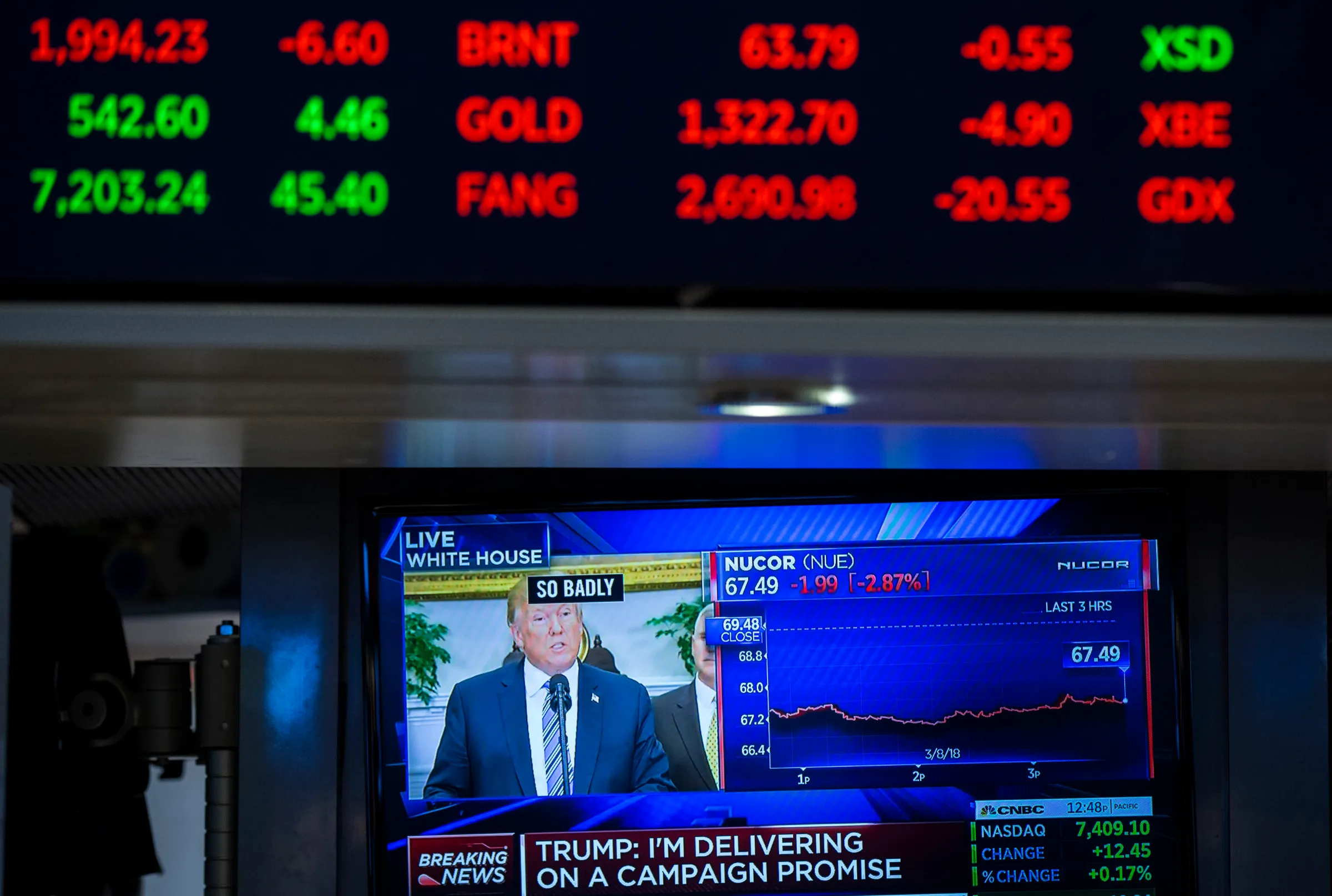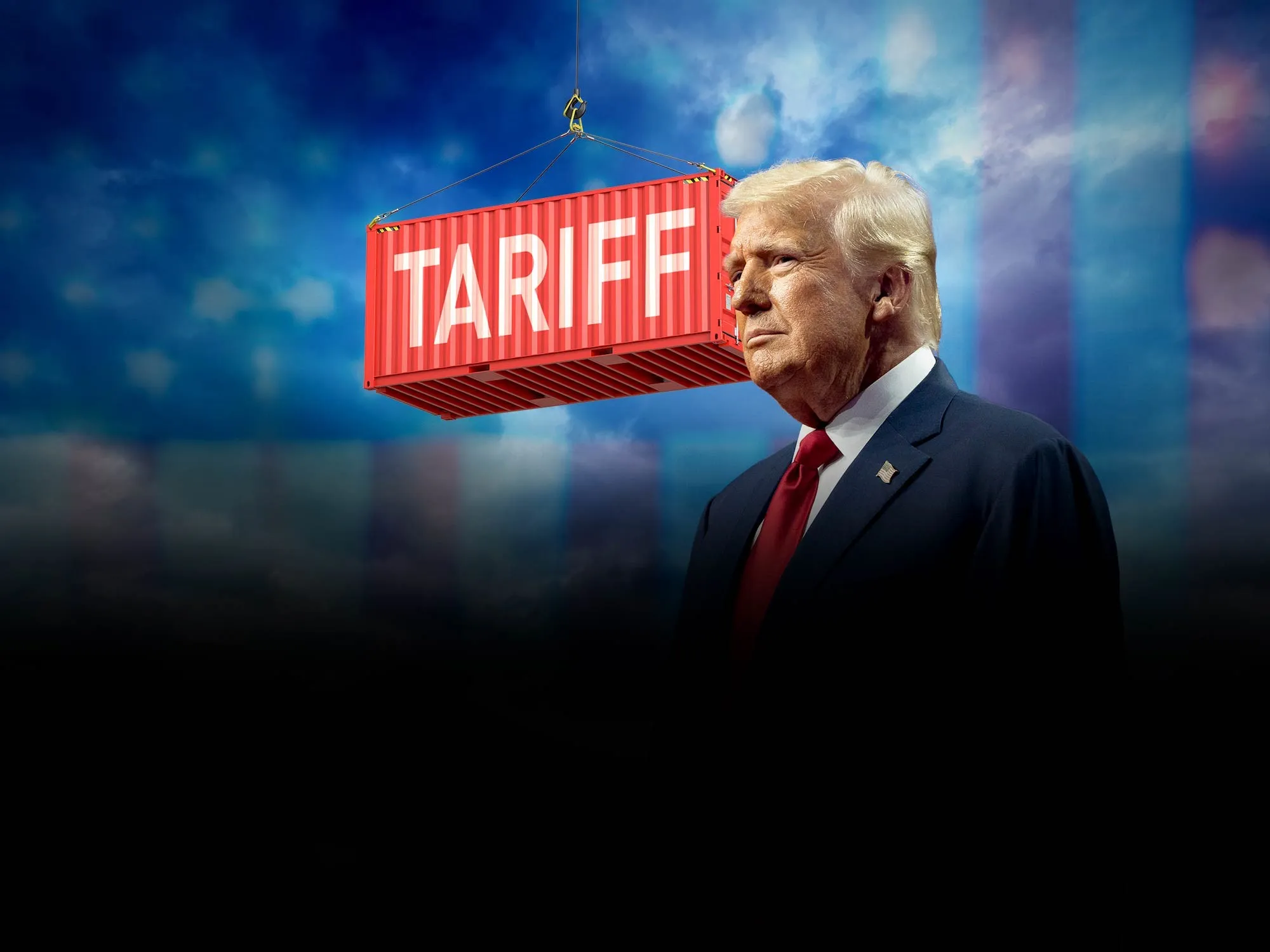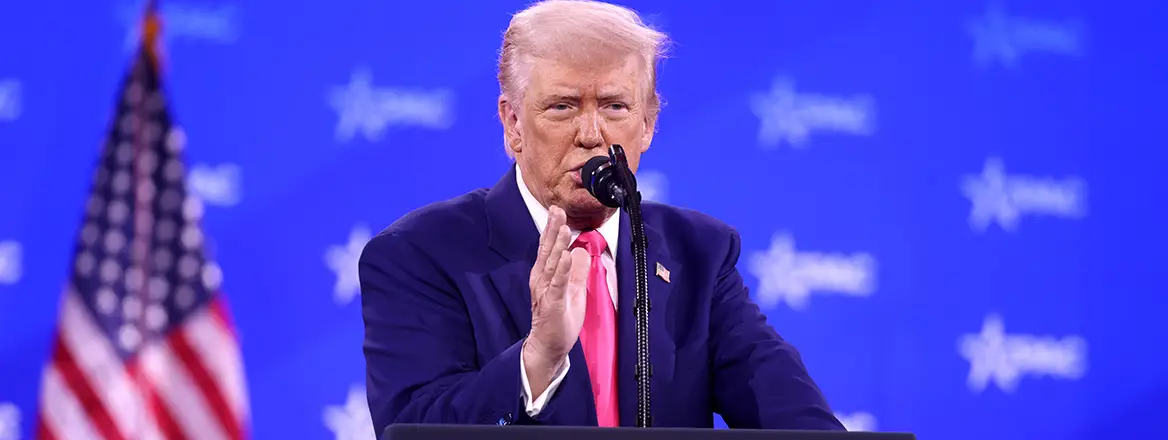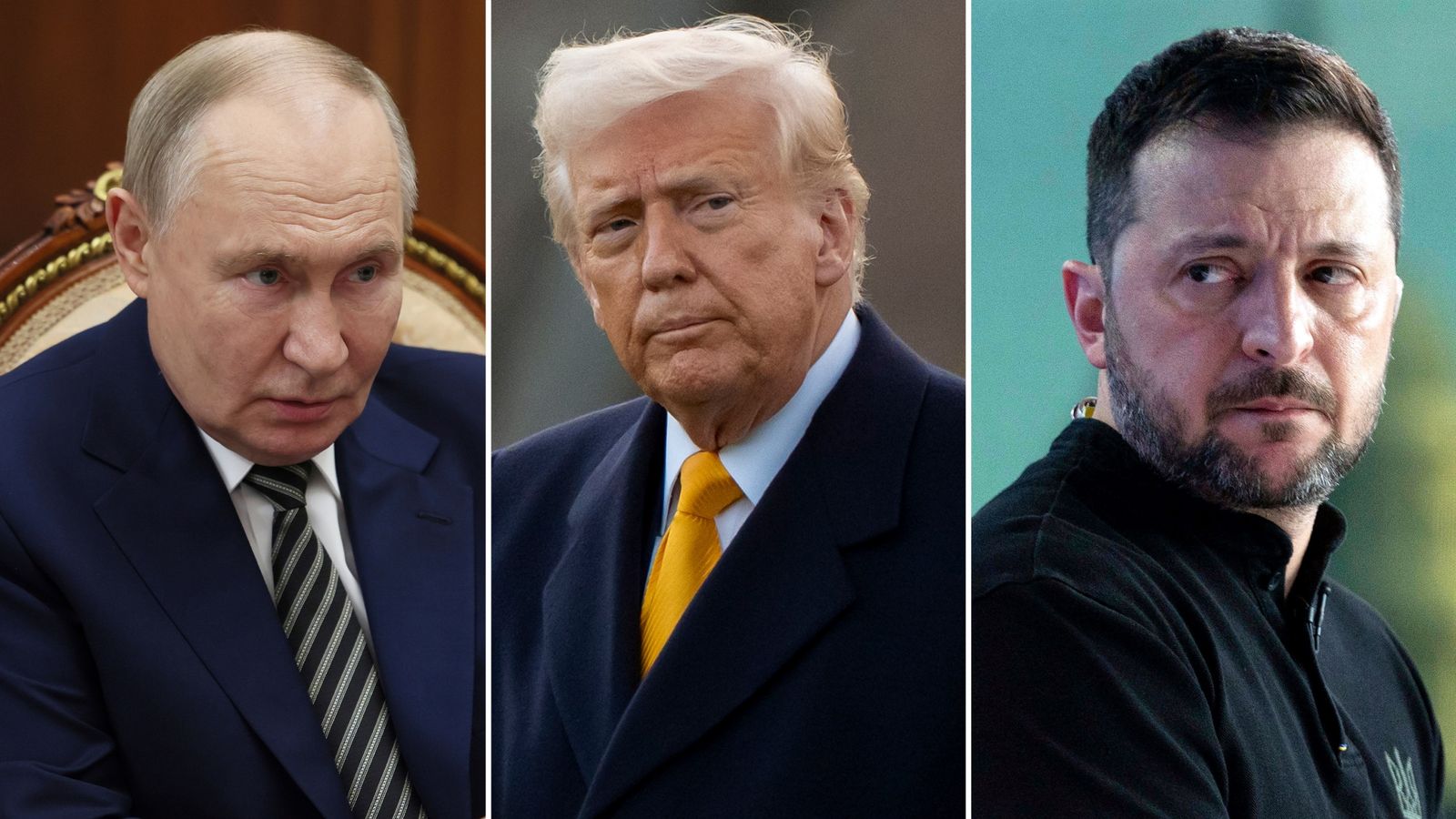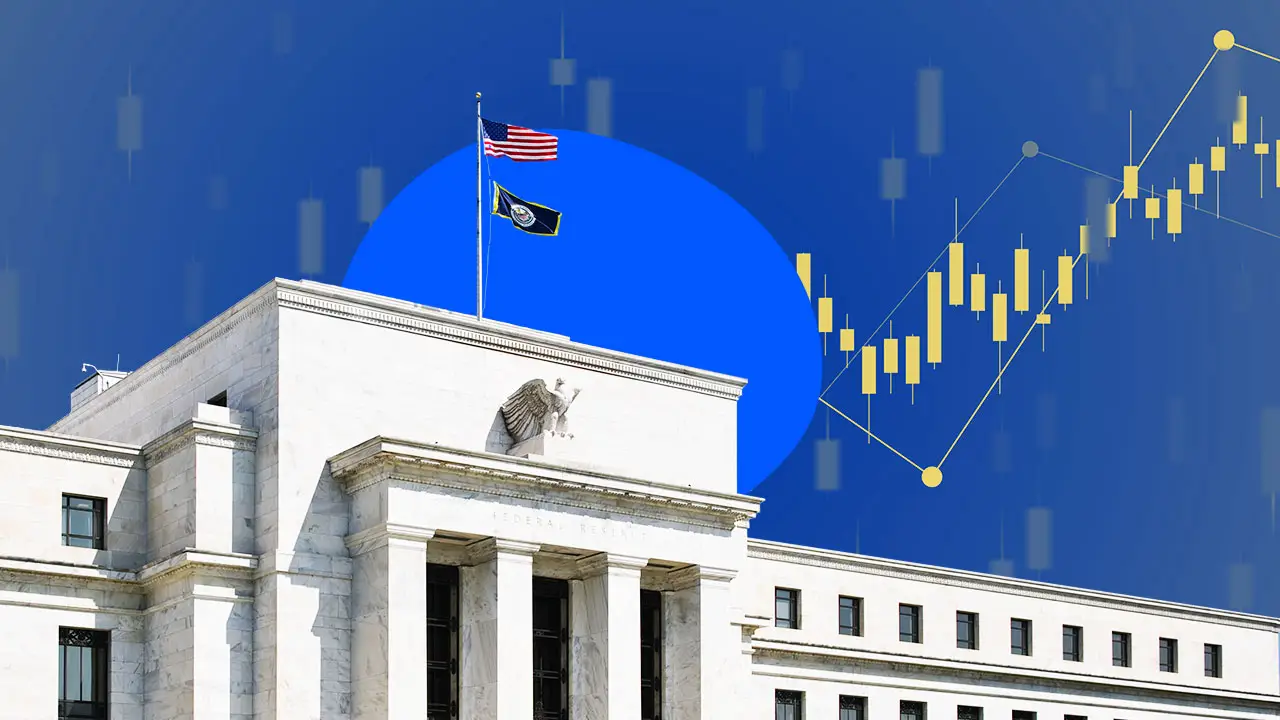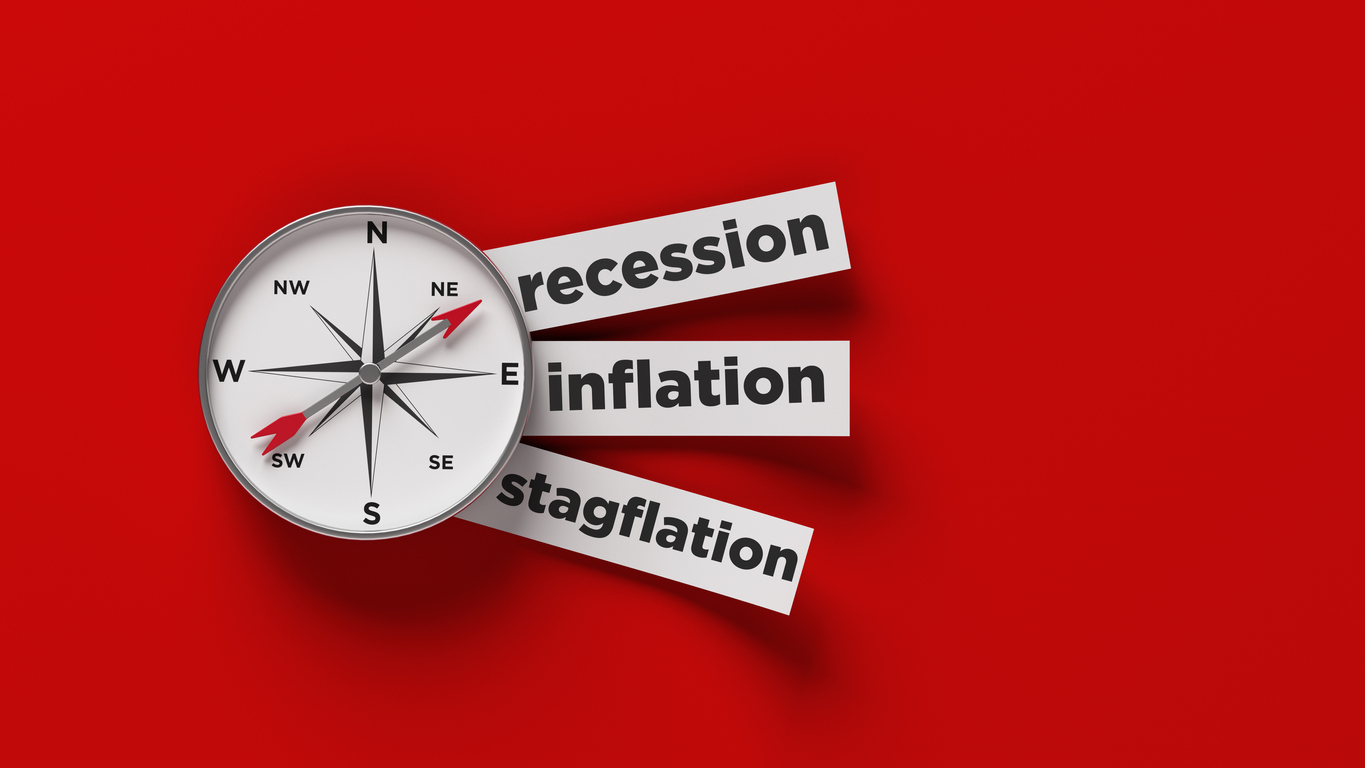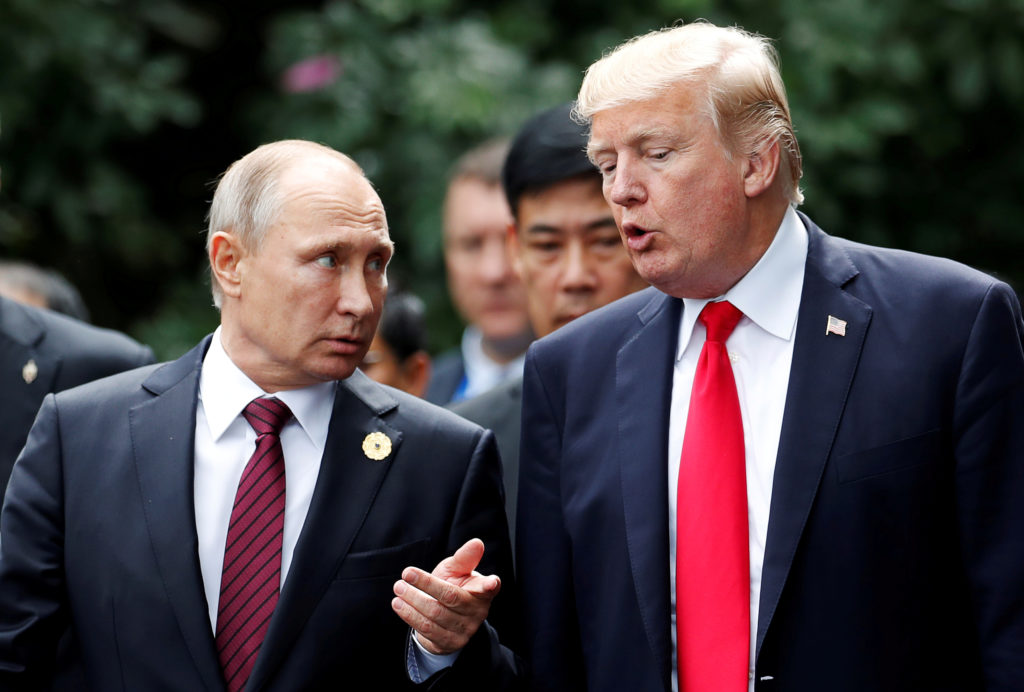Deadline Looms: US-Iran Relations Strain Under Tariffs and Retaliation Risks ជម្លោះអាមេរិក-អ៊ីរ៉ង់ ទំនាក់ទំនងរវាងអាមេរិក និងអ៊ីរ៉ង់នៅតែមានភាពតានតឹង បន្ទាប់ពីលោកប្រធានាធិបតី Trump បានដំឡើងពន្ធនិងគំរាមកំហែងពួកគេជាមួយនឹងសកម្មភាពយោធា។ មេដឹកនាំកំពូលរបស់អ៊ីរ៉ង់ លោក Khamenei បានព្រមានអំពី “ការវាយប្រហារទៅវិញ ប្រសិនបើសហរដ្ឋអាមេរិកធ្វើសកម្មភាពលើការគំរាមកំហែងបន្ថែមទៀត” ដែលបង្ហាញពីការត្រៀមខ្លួនក្នុងការសងសឹកត្រឡប់ទៅវិញ។ ខណៈពេលដែលលោក Trump បានបង្ហាញថាការវាយប្រហាររបស់សហរដ្ឋអាមេរិកនឹងបន្តប្រឆាំងនឹងក្រុម Houthi ដែលគាំទ្រដោយអ៊ីរ៉ង់ ដើម្បីទទួលបានសេរីភាពឡើងវិញ។ ភាគីទាំងពីរសុទ្ធតែបានបង្ហាញពីការត្រៀមខ្លួនក្នុងការសងសឹកត្រឡប់ទៅវិញ ទោះបីកិច្ចចរចាដោយប្រយោលនៅតែអាចធ្វើទៅបានក៏ដោយ។ ការដាក់ពន្ធ ពេលវេលាកំណត់ពន្ធបានខិតជិតមកដល់ហើយ។ ប្រសិនបើ Trump បន្តជាមួយរបៀបវារៈរបស់គាត់ដោយគ្មានការលើកលែងពន្ធណាមួយនោះទេ នោះកូដកម្មពីដៃគូពាណិជ្ជកម្មសំខាន់ៗនឹងត្រលប់មកវិញ ហើយវានឹងបង្កើនហានិភ័យនៃអតិផរណាបន្ថែមទៀត។ សហភាពអឺរ៉ុប និងចក្រភពអង់គ្លេសអាចប្រឈមមុខនឹងផលប៉ះពាល់យ៉ាងសំខាន់ ដោយលោកស្រីប្រធានធនាគារកណ្តាលអឺរ៉ុប Lagarde រំពឹងថាអាចនឹងប៉ះពាល់ទៅលើកំណើន ពោលគឺអាចធ្លាក់ចុះចំនួន 0.3%។ ចំណែករុស្ស៊ីវិញ បើទោះបីជាលោក Trump មិនមានការប្តេជ្ញាចិត្តយកពន្ធលើប្រេងរុស្ស៊ីក៏ដោយ ការគំរាមកំហែងណាមួយដែលបង្កឡើងចំពោះកិច្ចព្រមព្រៀងសន្តិភាពនឹងអាចជំរុញរូបលោកឱ្យដាក់ពន្ធទៅលើរុស្សីនោះដែរ។ *** យោងតាម (ប្រភពមិនច្បាស់លាស់មួយ)បានលើកឡើងថា រដ្ឋមន្ត្រីក្រសួងរតនាគារសហរដ្ឋអាមេរិក Nominee Bessent ថា “Trump នឹងប្រកាសភារកិច្ចដែលត្រូវគ្នានៅម៉ោង 3 រសៀលថ្ងៃពុធ” ដែលនឹងនៅម៉ោង 2 ព្រឹកថ្ងៃព្រហស្បតិ៍ម៉ោងនៅទីក្រុងភ្នំពេញ។ |English Version| US-Iran Conflict US-Iran relations remain intense after Trump’s plan to impose tariffs while threatening them with military action. Iran’s Supreme Leader Khamenei has warned of a “strong reciprocal blow” if the US acts on threats, indicating readiness to retaliate. While Trump has indicated US strikes will persist against Iran-backed Houthis to secure the freedom of navigation. Both sides signal readiness to escalate, though indirect talks remain possible. Tariffs The reciprocal tariffs deadline is approaching. If Trump continues with his agenda without any exemptions, then the strike from major trading partners will be back, and that will heighten the risk of inflation further. The EU and UK can face significant affected, with ECB’s Lagarde likely anticipating growth impacts, though a specific 0.3% drop is very likely. As for Russia, despite Trump having no commitment to tariffing on Russian oil, any threat posed to the peace deal will trigger this bullet point. ***According to (unreliable sources) US Treasury Secretary Nominee Bessent, “Trump will declare matching duties at 3 p.m. on Wednesday,” which will be around 2 am on Thursday in Phnom Penh time.
របាយការណ៍សង្ខេបទិន្នន័យប្រចាំសប្តាហ៍ត្រូវនឹងថ្ងៃទី 31 ខែមីនា ឆ្នាំ2025 នៅក្នុងរបាយការណ៍នេះ យើងនឹងតាមដានទៅលើបណ្តាសេដ្ឋកិច្ចសំខាន់ៗ រួមមានសហរដ្ឋអាមេរិក ចក្រភពអង់គ្លេស និងតំបន់អឺរ៉ុប ដែលភាគច្រើនផ្តោតសំខាន់ទៅលើសូចនាករសេដ្ឋកិច្ច និងព្រឹត្តិការណ៍សេដ្ឋកិច្ចមួយចំនួនដែលបានកើតឡើងក្នុងសប្តាហ៍នេះ។ តំបន់អឺរ៉ូ ស្ថានភាពរវាងសហភាពអឺរ៉ុប និងលោកប្រធានាធិបតី Trump នៅតែមានភាពតានតឹង ហើយវិនិយោគិនមួយចំនួននឹងតាមដានទៅលើព័ត៌មានបន្ថែមទៀតទាក់ទងនឹងពន្ធគយនៅខែមេសា។ យោងតាមអធិការបតីអាល្លឺម៉ង់លោក Scholz បានលើកឡើងថា “គោលដៅរបស់អឺរ៉ុបគឺកិច្ចសហប្រតិបត្តិការ ប៉ុន្តែសហភាពអឺរ៉ុបនឹងឆ្លើយតបលើការដាក់ពន្ធត្រឡប់ទៅវិញ ប្រសិនបើសហរដ្ឋអាមេរិកមិនទុកជម្រើសឱ្យពួកគេ”។ ជាក់ស្តែងនេះបានសបញ្ជាក់ថា ពួកគេនៅតែអាចចរចាបន្ថែមទៀត មុនពេលដែលកាលកំណត់បានឈានមកដល់។ លើសពីនេះ ធនាគារកណ្តាលអឺរ៉ុបក៏បានបន្ទាបការព្យាករណ៍ការនាំចេញសម្រាប់ឆ្នាំ 2025 ហើយនេះនឹងឆ្លុះបញ្ជាំងពីការប្រុងប្រយ័ត្នកាន់តែខ្លាំងចំពោះភាពមិនច្បាស់លាស់លើពាណិជ្ជកម្ម។ ជាក់ស្តែង អ្នកវិភាគមួយចំនួនបានលើកឡើងថា “ពន្ធ 25% របស់សហរដ្ឋអាមេរិកលើការនាំចេញរបស់សហភាពអឺរ៉ុបអាចកាត់បន្ថយផលិតផលក្នុងស្រុកសរុបរបស់សហភាពអឺរ៉ុបពី 0.33% ទៅ 0.4% ក្នុងរយៈពេលខ្លី ជាមួយនឹងផលប៉ះពាល់រយៈពេលវែងអាចមានសក្តានុពលកាន់តែខ្លាំងប្រសិនបើការសងសឹកលើការដាក់ពន្ធនៅតែបន្តមាន។” ក្រៅពីនេះ ប្រទេសដែលនាំចេញទំនិញធ្ងន់ៗ ដូចជាអាល្លឺម៉ង់ (រថយន្ត) អុីតាលី (គ្រឿងម៉ាស៊ីន) និងអៀរឡង់ (ឱសថ) អាចប្រឈមនឹងវិបត្តិសេដ្ឋកិច្ច។ ដូច្នេះបើទំនាក់ទំនងសហភាពអឺរ៉ុប និងអាមេរិកកាន់តែតានតឹង នោះកំណើនសេដ្ឋកិច្ចទាំងពីរនឹងត្រូវរងផលប៉ះពាល់យ៉ាងខ្លាំង។ លើសពីនេះ ជាមួយនឹងលទ្ធភាព 80% នៃការកាត់បន្ថយអត្រាការប្រាក់របស់ធនាគារកណ្តាលអឺរ៉ុប(ECB) ចំនួន 0.25% នៅក្នុងខែមេសា ទាំងអស់នេះអាចនឹងបង្កើននូវសម្ពាធអតិផរណាកាន់តែខ្លាំង ហើយក៏អាចធ្វើឱ្យប្រាក់អឺរ៉ូកាន់តែខ្សោយ នេះបើធៀបនឹងរូបិយប័ណ្ណផ្សេងទៀត។ ហើយប្រសិនបើ ECB ពិតជាកាត់បន្ថយមែននោះ នេះក៏មានន័យថាពួកគេនឹងព្យាយាមជំរុញកំណើនសេដ្ឋកិច្ចជាជាងការបន្ទាបអត្រាអតិផរណាមករកអត្រាគោលដៅ។ ចក្រភពអង់គ្លេស ចក្រភពអង់គ្លេសនៅតែស្ថិតក្នុងស្ថានភាពទន់ខ្សោយ អត្រាអតិផរណានៅតែបន្តស្ថិតលើសពីអត្រាគោលដៅប្រចាំឆ្នាំ ស្របពេលដែលក្តីកង្វល់បំណុលសាធារណៈនៅតែមាន។ ជាក់ស្តែង សេដ្ឋកិច្ចវិទូបានព្យាករណ៍ពីលទ្ធភាពដែលអាចមានការជាប់គាំងនៃសេដ្ឋកិច្ច ព្រមទាំងឥទ្ធិពលមកពីគោលនយោបាយពន្ធរបស់លោក Trump ធ្លាក់មកលើសេដ្ឋកិច្ចចក្រភពអង់គ្លេស។ ក្រុមហ៊ុន Goldman Sachs ព្យាករណ៍ថា ផលិតផលក្នុងស្រុកសរុប (GDP)អាចនឹងស្ថិតនៅក្នុងកម្រិត 0.2%-0.3% ក្នុងឆ្នាំ 2025 ប្រសិនបើបញ្ហាពន្ធនៅតែបន្ត។ ព័ត៌មានវិជ្ជមានគឺ ប្រាក់ឈ្នួលមានកម្រិតលើសពីទិន្នន័យអតិផរណា។ ចំពោះបញ្ហាពន្ធគយ បើទោះបីជាផលប៉ះពាល់ពន្ធគយពេញលេញនឹងមិនប៉ះពាល់អង់គ្លេសដូចការប៉ះពាល់របស់សហភាពអឺរ៉ុបក៏ដោយ ក៏វានឹងបង្កើនហានិភ័យអតិផរណា ធ្វើឱ្យទំនុកចិត្តអ្នកប្រើប្រាស់ចុះខ្សោយ កំណើនកាន់តែទន់ខ្សោយ។ លើសពីនេះ គឺនឹងបន្ទាបប្រាក់ GBP ធៀបនឹងរូបិយប័ណ្ណផ្សេងទៀត។ សហរដ្ឋអាមេរិក លោកប្រធានាធិបតី Donald Trump បច្ចុប្បន្នកំពុងព្យាយាមផ្លាស់ប្តូរនូវស្ថានភាពសេដ្ឋកិច្ចអាមេរិក ពោលគឺយើងកំពុងមើលឃើញពីភាពទន់ខ្សោយនៃសន្ទស្សន៍អារម្មណ៍វិនិយោគិន ការកើនឡើងនៃការរំពឹងទុកអត្រាអតិផរណា ព្រមទាំងការធ្លាក់ចុះនៃស្ថានភាពសេដ្ឋកិច្ចនាពេលថ្មីៗនេះ។ អ្នកវិភាគជាច្រើនឥឡូវនេះកំពុងបន្ទាបការព្យាករណ៍ផលិតផលក្នុងស្រុកសរុប GDP ដែលអ្នកខ្លះក៏ព្យាករណ៍ថានឹងទាបជាងកំណើន 0.0% (ការព្យាករណ៍របស់ Atlanta FED) និងខ្លះទៀតព្យាករណ៍ថាអាចនឹងធ្លាក់ចុះដល់ 1.7% (Deloitte) ដែលទាំងអស់បង្ហាញពីផលប៉ះពាល់គោលនយោបាយពន្ធមកកាន់សេដ្ឋកិច្ចអាមេរិក។ ប្រសិនបើ Trump ពិតជាដាក់ពន្ធសងសឹកដូចការរំពឹងទុកនៅថ្ងៃទី 02 ខែមេសា វានឹងជំរុញឱ្យមានការភ័យខ្លាចចំពោះភាពជាប់គាំងកាន់តែច្រើននៅក្នុងទីផ្សារ។ ដូច្នេះហើយបានជាធនាគារកណ្តាលអាមេរិកបច្ចុប្បន្នមានយុទ្ធសាស្ត្រកាន់តែប្រុងប្រយ័ត្នចំពោះការសម្រេចចិត្តអត្រាការប្រាក់។ ក្រៅពីនោះ លោក Trump ក៏បានគំរាមរុស្ស៊ី អ៊ុយក្រែន និងអ៊ីរ៉ង់ផងដែរ។ → ទាំងអស់នេះកំពុងតែបង្កឱ្យមានការរំខានមួយចំនួននៅលើទីផ្សារប្រេងពិភពលោក ដែលអាចនឹងបង្កើនសម្ពាធអតិផរណាឱ្យកាន់តែខ្លាំងថែមទៀត។ |English Version| Weekly Data Summary Report As of March 31, 2025 In this report, we will assess major economies, including the United States, the United Kingdom, and the Eurozone, mainly based on their economic indicators and economic events that have occurred within the week. The Eurozone The situation between the EU and Trump remains intense as all await the April tariff confirmation from both economies. As per German Chancellor Scholz, “Europe’s goal is cooperation, but the EU will respond as one if the US leaves us no choice, such as with steel and aluminum tariffs,” leaving some room for further negotiation before the deadline comes. The European Central Bank also downgraded net-export projection for 2025, hinting at a cautious outlook as an uncertain trade loomed. In fact, analysts cited that, “A 25% U.S. tariff on EU exports could reduce EU GDP by 0.33% to 0.4% in the short term, with longer-term impacts potentially greater if retaliation spirals.” Additionally, export-heavy nations like Germany (automotive), Italy (machinery), and Ireland (pharmaceuticals) could face recessionary pressures. So, having said that, if the EU and US relationship becomes more strained, then both economic growth will definitely be hit by a significant blow. Furthermore, with an 80% chance of a 0.25% ECB rate cut in April, all are likely to bring more inflation while weakening the EUR against other currencies. And if the ECB really eases, then it is seen that the ECB is now prioritizing saving the economy rather than controlling inflation. The United Kingdom The United Kingdom remained in a weak state as growth continued to soften, inflation stayed above the target and public debt concerns still loomed. In fact, economists forecast to see a stagnation and external shocks from Trump’s tariff policy falling on the UK economy. Goldman Sachs projects a 0.2%-0.3% GDP in 2025 if the tariff continues with its current trend. The only positive news is that wages now outpace the inflation data, offering some relief for a while, albeit we’re all knowing that inflation could eat up the consumer spending at any time. For the tariff problem, although the full materialized tariff would not affect as much as the EU’s, this will heighten the inflation risk, weakening consumer confidence, softening growth, and lowering the GBP against other currencies. The United States Not only to its peers, President Donald Trump is now reshaping the US economy, given how we are now seeing a weaker investor sentiment; higher inflation expectation comes into play while the growth begins to weaken. Many analysts are now downgrading the GDP forecast, which some also project to be below potential growth (as per Atlanta FED) and some down to 1.7% (Deloitte), all suggesting an uncertainty in policy and tariff effects. So now, if Trump really imposes retaliatory tariffs as expected on April 02, this will fuel more stagflation fear in the market. Therefore, we are now seeing a cautious approach from the Federal Reserve. Aside from that, Trump also threatened Russia, Ukraine, and Iran with new tariff sanctions and economic aids. → All of these are causing some disruption in the global oil market, potentially putting upward inflation pressures even further.
Gold Hits $3,065 as Trade War Looms: Allies Unite Against Trump’s Tariffs តម្លៃមាសបានបំបែកកំណត់ត្រាសារជាថ្មីម្តងទៀត ដោយកើនឡើងខ្ពស់លើសពី $3,065 ក្នុងមួយអោន នៅពេលដែលភាពតានតឹងពាណិជ្ជកម្មកើនឡើង។ ដៃគូពាណិជ្ជកម្មសំខាន់ៗរបស់សហរដ្ឋអាមេរិក រួមទាំងសហភាពអឺរ៉ុប កាណាដា និងសូម្បីតែប្រទេសចិន បានរួបរួមគ្នាប្រឆាំងទៅនឹងគោលនយោបាយពាណិជ្ជកម្មដ៏អាក្រក់របស់លោកប្រធានាធិបតី Trump តាមរយៈការដាក់ពន្ធត្រឡប់ទៅវិញ។ យោងតាមនាយករដ្ឋមន្រ្តីកាណាដា Carney “វាច្បាស់ណាស់ថាសហរដ្ឋអាមេរិកលែងជាដៃគូដែលអាចទុកចិត្តបានទៀតហើយ” ដែលជាសញ្ញានៃការត្រៀមខ្លួនដើម្បីទប់ទល់នឹងពន្ធគយនៅពេលដែលពេលវេលាកំណត់បានខិតជិតមកដល់ (ថ្ងៃទី2 ខែមេសា)។ ខណៈដែល Trump ក៏អាចនឹងដាក់ពន្ធបន្ថែមទៀត ដូចការបង្ហោះរបស់គាត់កាលពីម្សិលមិញ។ ទន្ទឹមនឹងនេះ ប្រធានាធិបតីម៉ិកស៊ិក Sheinbaum នៅតែប្រុងប្រយ័ត្នចំពោះឆ្លើយតបរបស់លោកទៅកាន់បញ្ហាពន្ធមួយនេះ។ ដោយលើកឡើងពីបញ្ហាប្រឈមនៃការផ្លាស់ប្តូរទីតាំងរោងចក្ររថយន្តទៅកាន់សហរដ្ឋអាមេរិក ខណៈពេលដែលលើកឡើងពីលទ្ធភាពដែលអាចកើតមានកំណើនការបាត់បង់ការងារយ៉ាងច្រើនប្រសិនបើពួកគេទទួលយកពន្ធមួយនេះ។ ប្រទេសម៉ិកស៊ិកគ្រោងនឹងឆ្លើយតបជាផ្លូវការនៅអំឡុងថ្ងៃទី 2-3 ខែមេសា។ លើសពីនេះ IMF ក៏បានបញ្ជាក់ផងដែរថា “ប្រសិនបើបញ្ហានេះនៅតែបន្តមាន នោះពន្ធគយរបស់ Trump នឹងជះឥទ្ធិពលយ៉ាងធ្ងន់ធ្ងរលើកំណើនសេដ្ឋកិច្ចរបស់ប្រទេសកាណាដា និងម៉ិកស៊ិក” ដោយបង្ហាញពីលទ្ធភាពនៃការធ្លាក់ចុះសេដ្ឋកិច្ចបន្ថែមទៀត។ ជាក់ស្តែង វិនិយោគិននឹងតាមដានទៅលើការសម្រេចចិត្តពន្ធគយនាសប្តាហ៍ក្រោយ ព្រមទាំងការឆ្លើយតបរបស់ប្រទេសទាំងនោះ។ ទីផ្សារអាចនឹងមានបម្រែបម្រួលខ្លាំងជាមិនខាន។ អ្វីដែលមិនអាចជៀសផុតនោះ គឺការដាក់ពន្ធអាចនឹងបង្កើនអត្រាអតិផរណា ព្រមទាំងបន្ទាបកំណើនសេដ្ឋកិច្ចផងដែរ។ ដូច្នេះសន្ទស្សន៍តម្លៃ PCE នៅយប់នេះ ដែលធនាគារកណ្តាលអាមេរិកពេញនិយមក្នុងការប្រើប្រាស់វា នឹងផ្តល់នូវព័ត៌មានសំខាន់ៗបន្ថែមទៀត។ |English Version| Gold prices shattered records once again, soaring to an all-time high above $3,065 per ounce as trade tensions intensified. Major U.S. trading partners, including the European Union, Canada, and even China, have united in opposition to President Trump’s aggressive trade policies through a collective reciprocal. According to Canada’s PM Carney, “It is clear that the United States is no longer a reliable partner,” signaling readiness to counter with tariffs as deadlines loom. While Trump also won’t be backing down and is willing to respond back, as per his posting yesterday. Meanwhile, Mexico’s President Sheinbaum remains cautious about retaliating against Trump’s tariffs. Citing the challenges of relocating auto plants to the U.S. while warning it would trigger significant job losses if the tariff is accepted. Mexico plans to finalize its stance by April 2-3. With all of that in mind, the IMF also stated that, “If sustained, Trump’s tariffs would have a significant adverse effect on Canada and Mexico’s growth outlook,” highlighting the potential for economic gloom in both nations, which are already grappling with stagnation. All eyes now turn to next week’s critical tariff deadline, which promises to reveal how these economies will respond. Market volatility appears inevitable. Tariffs would bring more inflation and diminish economic growth; that is a fact. So tonight’s PCE price index—the FED’s most favorite inflation gauge—will also bring some light. So stay tuned!
Trump’s Trade: Tariff Shifts, Federal Reserve’s Response, and Greenland Ambitions. ពន្ធគយរបស់ប្រទេសចិនអាចនឹងត្រូវបានបន្ទាប លោកប្រធានាធិបតី Donald Trump អាចនឹងពិចារណាកាត់បន្ថយពន្ធលើប្រទេសចិន ស្របពេលដែលទាមទារទៅលើការគាំទ្រទៅលើការលក់ប្រតិបត្តិការរបស់អាមេរិកក្នុង ByteDance Ltd. មកកាន់ក្រុមហ៊ុនអាមេរិក នេះបើយោងតាមប្រភព Bloomberg ។ ទោះបីជាប្រទេសចិនមិនបានឆ្លើយតបភ្លាមៗទៅនឹងការអត្ថាធិប្បាយរបស់គាត់ក៏ដោយ ប៉ុន្តែមនុស្សជាច្រើនកំពុងរំពឹងយ៉ាងខ្លាំងថា ប្រសិនបើប្រទេសចិនពិតជាយល់ព្រមចំពោះសំណើនេះ នោះវានឹងផ្តល់នូវ “សញ្ញាអាក្រក់” ដូចដែលបានលើកឡើងដោយលោក Josef Gregory Mahoney សាស្ត្រាចារ្យផ្នែកទំនាក់ទំនងអន្តរជាតិនៅសាកលវិទ្យាល័យ East China Normal University របស់ទីក្រុងសៀងហៃ។ នេះក៏មានន័យថាវាអាចបង្កើតការប្រកួតប្រជែងកាន់តែខ្លាំងជាងអ្វីដែលប្រទេសចិនកំពុងមានរួចទៅហើយ។ ពន្ធទៅលើគ្រឿងយន្តនឹងចូលជាធរមាននៅថ្ងៃទី 02 ខែមេសា លោក Trump ក៏បានប្រកាសពីការអនុវត្តពន្ធ 25% លើរថយន្តទាំងអស់ដែលមិនត្រូវបានផលិតនៅក្នុងសហរដ្ឋអាមេរិក ហើយនឹងចូលជាធរមាននៅថ្ងៃទី 02 ខែមេសា។ គោលដៅចម្បងគឺ ដើម្បីបង្ខំឱ្យក្រុមហ៊ុនធំ ៗ ផ្លាស់ទីផលិតកម្មរបស់ពួកគេនិងជំរុញការបង្កើតការងារបន្ថែមទៀតនៅក្នុងសហរដ្ឋអាមេរិក។ ពោលគឺពួកគេមានជម្រើសពីរ គឺការផ្លាស់ទីផលិតកម្ម ឬក៏ប្រឈមមុខនឹងពន្ធខ្ពស់។ ទាំងពីរជម្រើសនេះសុទ្ធតែអាចចាត់ជាចំណូលសម្រាប់សហរដ្ឋអាមេរិកបាន លុះត្រាតែពួកគេបានរកឃើញនូវទីផ្សារថ្មី។ យ៉ាងណាក៏ដោយសម្រាប់សហភាពអឺរ៉ុបវិញ លោក Trump នៅតែនិយាយដដែលៗនូវសេចក្តីថ្លែងការណ៍របស់គាត់ស្តីពីការធ្វើបាបដោយ EU ពោលនេះក៏បានបង្ហាញថា ការចរចារវាងប្រទេសទាំងពីរអាចនឹងពិបាក។ ជាក់ស្តែង សូម្បីតែមន្ត្រីកំពូលៗរបស់សហភាពអឺរ៉ុប ក៏រំពឹងថានឹងសេដ្ឋកិច្ចពួកគេអាចនឹងប្រឈមមុខនឹងការដាក់ពន្ធ 20% ពីលោក Trump ដែរ នេះបើយោងតាមកាសែត Financial Times ។ ហ្គ្រីនឡែន ប្រធានាធិបតី ដូណាល់ ត្រាំ នៅតែព្យាយាមចង់គ្រប់ដណ្តប់ Greenland ដើម្បីជាប្រយោជន៍ដល់សន្តិសុខអន្តរជាតិ។ ធនាគារកណ្តាលអាមេរិក ធនាគារកណ្តាលអាមេរិកនៅតែបញ្ជាក់សារជាថ្មីថាសេដ្ឋកិច្ចអាមេរិកនៅឆ្ងាយពីវិបត្តិសេដ្ឋកិច្ច ហើយពួកគេនៅតែបេជ្ញាចិត្តក្នុងការបន្ទាបអត្រាអតិផរណាមកត្រឹមកម្រិតគោលដៅ នេះបើយោងតាមសមាជិកធនាគារកណ្តាលអាមេរិកលោក Musalem។ នេះក៏មានន័យថាពួកគេនៅតែបើកចំហចំពោះការដំឡើងអត្រាការប្រាក់បន្ថែមទៀត ប្រសិនបើអតិផរណាផ្លាស់ទីលើសពី 2% ។ លើសពីនេះ លោកក៏បានលើកឡើងថា អាជីវកម្មខ្នាតតូចមួយចំនួននៅតែស្ទាក់ស្ទើរក្នុងការជ្រើសរើសបុគ្គលិក និងការវិនិយោគបន្ថែមទៀត។ យោងតាមឧបករណ៍ CME Fedwatch ឥឡូវនេះវិនិយោគិនជឿជាក់ថាអាចនឹងមានភាគរយក្នុងការដំឡើងអត្រាការប្រាក់ដូចគ្នា។ |English Version| Possible Tariff Reduction on China Trump might consider reducing the tariff on China in exchange for Beijing’s support on the sale of US operations of ByteDance Ltd., as per a Bloomberg source. Although China has not immediately responded back to his earlier comment, many are highly anticipating that if China really agrees to this request, then this sends a “bad signal,” as stated by Josef Gregory Mahoney, a professor of international relations at Shanghai’s East China Normal University. Meaning that this might create even more fierce competition than we already had in the competitive industry and hostility from one firm to another. Auto Tariff will come into effect on April 02 Trump also announced his motive for implementing a 25% tariff on all cars that are not made in the United States, which will come into effect on April 02 while collecting on April 03. The goal is to force major companies to move their production and stimulate more job creation in the US. Either you move or you will be faced with high tariffs; all will become revenue for the US unless you find other stream markets. Yet, for the EU, Trump still repeated his statement on being mistreated by the EU, which having an exemption or negotiation, would be far off from the table. In fact, even top EU officials also anticipate a 20% tariff coming from Trump, as per the Financial Times. Greenland President Donald Trump is still pestering to take over Greenland for the sake of international security. Federal Reserve The Federal Reserve is still reaffirming that the US economy is far off from the recession or even stagflation, yet remains committed toward bringing the inflation down to the restrictive level, as per the FED’s Musalem. This also means that they are still open to more interest rate hikes if the inflation moves far beyond the 2%. While he is also addressing a freezing of hiring and investing by the small businesses. As per CME Fedwatch tool, the odds now open on a range of 450-475 after the statement, addressing on having a slight hawkish tone.
Trump’s Tariff Tightrope: Balancing Trade, Reciprocity, and Recession Risks សហរដ្ឋអាមេរិក សន្ទស្សន៍ទំនុកចិត្តអ្នកប្រើប្រាស់អាមេរិកបានបន្តធ្លាក់ចុះមកដល់កម្រិត 92.9 ទាបជាងទិន្នន័យព្យាករណ៍ ហើយនោះបង្ហាញពីលទ្ធភាពកាន់តែច្រើនដែលសេដ្ឋកិច្ចអាមេរិកអាចនឹងទន់ខ្សោយជាងមុនប្រសិនបើការធ្លាក់ចុះនៃទំនុកចិត្តនេះ នៅតែបន្តបន្ទាបតម្រូវការប្រើប្រាស់។ ជាក់ស្តែង ក្រុមហ៊ុន Goldman Sachs ក៏បានលើកឡើងពីលទ្ធភាពកាន់តែច្រើនដែលសេដ្ឋកិច្ចអាចធ្លាក់ចូលវិបត្តិសេដ្ឋកិច្ច។ ដូច្នេះប្រសិនបើភាពមិនច្បាស់លាស់នៅតែបន្តមាន នោះវិបត្តិសេដ្ឋកិច្ចអាចនឹងកើតមានកាន់តែច្រើន។ លោកប្រធានាធិបតី Donald Trump គិតត្រឹមថ្ងៃនេះ លោកប្រធានាធិបតី Donald Trump មិនទាន់ចេញវិធានការច្បាស់លាស់ណាមួយទៅលើការផ្លាស់ប្តូរគោលនយោបាយពន្ធនោះឡើយ។ ពោលគឺ រូបលោកគ្រាន់តែលើកឡើងថាការដាក់ពន្ធត្រឡប់ទៅវិញអាចនឹងមានកម្រិតធូរស្រាលជាងមុនតែប៉ុណ្ណោះ ដែលបានបង្ហាញពីភាពបត់បែនរបស់លោកលើផែនការពន្ធ ហើយនេះក៏បានផ្តល់នូវទស្សនវិស័យវិជ្ជមានមួយចំនួនទៅកាន់ប្រទេសមុិកសុិក និងកាណាដា។ លើកលែងតែសហភាពអឺរ៉ុបតែប៉ុណ្ណោះ ដែលទំនាក់ទំនងប្រទេសទាំងពីរនៅមិនទាន់មានភាពប្រសើរឡើងនៅឡើយទេ។ ការតាមដានបន្ថែមទៀត៖ Trump បាននិយាយថាមាន “សេចក្តីប្រកាសពាណិជ្ជកម្មនឹងមកដល់នៅថ្ងៃស្អែក” ព្រមទាំងលើកឡើងពីផែនការស្តីពីពន្ធនាំចូលទង់ដែងក្នុងរយៈពេលប៉ុន្មានសប្តាហ៍ផងដែរ។ អ៊ុយក្រែន និងរុស្ស៊ី ទោះបីជាមានកិច្ចព្រមព្រៀងស្តីពីបទឈប់បាញ់លើការវាយប្រហារហេដ្ឋារចនាសម្ព័ន្ធថាមពល និងសមុទ្រខ្មៅរវាងអ៊ុយក្រែន និងរុស្ស៊ីក៏ដោយ ក៏មិនទាន់មានព័ត៌មានលម្អិតណាមួយដែលបានផ្តល់នូវថ្ងៃជាក់លាក់ ឬរបៀបដែលវានឹងត្រូវបានអនុវត្តនោះទេ។ ប៉ុន្តែរឿងមួយដែលប្រាកដនោះគឺថា ប្រធានាធិបតីអ៊ុយក្រែន Zelenskiy នឹង “ប្តឹងទៅសហរដ្ឋអាមេរិកដោយផ្ទាល់” ប្រសិនបើរុស្សីបន្តការវាយប្រហារមកកាន់ប្រទេសខ្លួន។ ទោះបីជាយ៉ាងណាក៏ដោយ នេះអាចជាជំហានបន្ទាប់ឆ្ពោះទៅរកការបញ្ចប់សង្គ្រាមរុស្ស៊ី-អ៊ុយក្រែន។ ការនាំចូលប្រេងរបស់វេណេស៊ុយអេឡា បន្ទាប់ពីប្រធានាធិបតី Trump បានប្រកាសពន្ធលើប្រទេសដែលនាំចូលប្រេង និងឧស្ម័ន របស់ប្រទេស Venezuelan ដែលនឹងចូលជាធរមានៅថ្ងៃទី 2 ខែមេសារួចមក ក្រសួងការបរទេសចិនបានប្រឆាំងយ៉ាងម៉ឺងម៉ាត់ចំពោះរឿងនេះ ព្រោះវានឹងបន្ថែមសម្ពាធកាន់តែច្រើនលើការចំណាយអាជីវកម្មរបស់ចិន(តម្លៃឡើងថ្លៃ) និងអាចរំខានដល់លទ្ធភាពក្នុងការទទួលបានប្រេងឆៅពីប្រទេស Venezuelan ដែលមានតម្លៃសមរម្យ។ ជាពិសេសនៅពេលដែលប្រទេសចិនជាអ្នកទិញដ៏ធំបំផុតនៃប្រេង Venezuelan ដូច្នេះការដាក់ពន្ធលើនេះនឹងនាំឱ្យមានការធ្លាក់ចុះសេដ្ឋកិច្ចទាំងពីរកាន់តែច្រើន។ |English Version| The United States US consumer confidence continues to decline to 92.9, lower than the initial expected reading, and that suggests a potential for weaker economic growth if soft confidence remains dragging on demand consumption. In fact, Goldman Sachs also brought out the possibility of having more recession risk. So, having a prolonged uncertainty in trade tension would also dig itself further into the recession scenario. Trump As of today’s date, there is no firm policy shift from President Donald Trump yet aside from his soft tone toward his “reciprocal tariff” approach and that suggests his flexibility on Trump’s tariff plans. Saying that, “I will likely be more lenient than reciprocal,” giving a potential break on some, particularly to Mexico and Canada, as he also expressed positivity on their recent approaches. Except for the EU, where the relationship still has not gotten any better yet. Forward Looking: Ukraine and Russia Despite an agreement on a ceasefire between Ukraine and Russia that has been made on energy infrastructure attacks and the Black Sea, no further details were given on the exact date or how it would be implemented. But one thing for sure is that Ukraine’s President Zelenskiy would “appeal to the US directly” by seeking more weapons from them if Russia broke the ceasefire. Regardless, this could represent another step toward the end of the Russia-Ukraine war. Venezuelan oil imports After President Trump announced tariffs on nations importing Venezuelan oil and gas, effective on April 2, the Chinese foreign ministry has firmly opposed this, as this will add to more pressures on Chinese businesses’ costs and potentially disrupt their access to affordable Venezuelan crude. Especially when China is the largest buyer of Venezuelan oil, importing significant volumes, so imposing a tariff on this would lead to more economic downturn for both economies.
របាយការណ៍សង្ខេបទិន្នន័យប្រចាំសប្តាហ៍ត្រូវនឹងថ្ងៃទី 22 ខែមីនា ឆ្នាំ2025 នៅក្នុងរបាយការណ៍នេះ យើងនឹងតាមដានទៅលើបណ្តាសេដ្ឋកិច្ចសំខាន់ៗ រួមមានសហរដ្ឋអាមេរិក តំបន់អឺរ៉ុប ជប៉ុន អូស្ត្រាលី ចក្រភពអង់គ្លេស និងកាណាដា ដែលភាគច្រើនផ្តោតសំខាន់ទៅលើសូចនាករសេដ្ឋកិច្ច និងព្រឹត្តិការណ៍សេដ្ឋកិច្ចមួយចំនួនដែលបានកើតឡើងក្នុងសប្តាហ៍នេះ។ ប្រទេសអូស្ត្រាលី ទោះបីជាធនាគារកណ្តាលនៅអូស្ត្រាលីបានបន្ទាបអត្រាការប្រាក់ពីមុនក៏ដោយ ក៏ស្ថានភាពទីផ្សារការងារនៅតែមានសភាពទន់ខ្សោយនោះដែរ ដោយសារតែចំនួនអ្នកមានការងារធ្វើកាន់តែមានកម្រិតទាបជាងមុន ស្របពេលដែលអត្រាអ្នកចូលរួមកម្លាំងពលកម្ម (Participation Rate) បានធ្លាក់ចុះមកដល់ 66.8%។ ទាំងអស់នេះសុទ្ធតែអាចជំរុញឱ្យធនាគារកណ្តាលកាត់បន្ថយអត្រាការប្រាក់ចំនួន 2 ដងបន្ថែមទៀត ពោលគឺទីផ្សារចំនួន 77% បានជឿជាក់រួចទៅហើយទៅលើការបន្ទាបនៅខែឧសភា នេះបើតាមប្រភពព័ត៌មាន Bloomberg។ ប្រទេសជប៉ុន ធនាគារកណ្តាលជប៉ុនបានរក្សាអត្រាការប្រាក់ក្នុងកម្រិតដដែល ទោះបីជាស្ថានភាពសេដ្ឋកិច្ចបានឆ្លុះបញ្ជាំងពីភាពទន់ខ្សោយ និងលទ្ធភាពនៃកំណើនអត្រាអតិផរណាកាន់តែច្រើនទៀតក៏ដោយ។ អ្វីដែលគួរឱ្យបារម្ភនោះគឺ អត្រាអតិផរណាមកពីប្រាក់ឈ្នួល។ ប្រសិនបើកំណើននេះកាន់តែខ្ពស់នោះធនាគារកណ្តាលអាចនឹងមានភាគរយច្រើនក្នុងការដំឡើងអត្រាការប្រាក់បន្ថែមទៀត លើកលែងតែក្នុងករណីដែលសេដ្ឋកិច្ចស្ថិតក្នុង “ស្ថានភាពអាក្រក់”។ ជាក់ស្តែង យើងកំពុងឃើញពីការធ្លាក់ចុះបន្តិចនៃអត្រាអតិផរណាក្នុងខែកុម្ភៈនេះ ដែលអាចជំរុញឱ្យអត្រាការប្រាក់រក្សារហូតទៅដល់ខែមិថុនា និងកក្កដា។ ប្រទេសកាណាដា សេដ្ឋកិច្ចរបស់ប្រទេសកាណាដាបានកើនឡើងយឺត ទោះបីជាមានការបន្ធូរបន្ថយអត្រាការប្រាក់ជាច្រើនដងពីធនាគារកណ្តាលកាណាដាក៏ដោយ។ អ្វីដែលយើងកំពុងប្រឈមមុខនោះគឺ បញ្ហាតម្រូវការ ភាពទន់ខ្សោយនៃទីផ្សារការងារ បញ្ហាបំណុល ព្រមទាំងបញ្ហាអតិផរណាដែលបានកើនខ្ពស់ជាងអត្រាគោលដៅ ជាពិសេសគួបផ្សំជាមួយនឹងបញ្ហាសង្រ្គាមពន្ធដែលកើតមាននាពេលបច្ចុប្បន្ននោះ ទាំងនេះសុទ្ធតែអាចជំរុញឱ្យការចំណាយទូទៅអាចនឹងមានបញ្ហាទៅមុខទៀតកាន់តែច្រើន។ យោងទៅតាមអភិបាលរបស់ធនាគារកណ្តាលកាណាដាលោក Macklem “ប្រសិនបើបញ្ហាពន្ធនៅតែបន្តមាន នោះវាអាចជំរុញឱ្យមានបញ្ហាវិបត្តិសេដ្ឋកិច្ចជាមិនខាន។” ពោលគឺអាចនឹងបន្ថែមការគំរាមកំហែងទៅលើការធ្លាក់ចុះនៃសេដ្ឋកិច្ចបន្ថែមទៀត ប្រសិនបើទាំង Trump និងកាណាដាមិនឈានដល់កិច្ចព្រមព្រៀងណាមួយក្នុងពេលឆាប់ៗនេះ។ លើសពីនេះ ទីផ្សារបានបន្ទាបលទ្ធភាពនៃការបន្ធូរបន្ថយអត្រាការប្រាក់ក្នុងខែមេសាពី 43% ទៅ 30%។ ដូច្នេះ ពួកគេនឹងតាមដានទៅលើពន្ធគយរបស់ Trump នៅថ្ងៃទី 2 ខែមេសា។ ចក្រភពអង់គ្លេស ធនាគារកណ្តាលអង់គ្លេសបានរក្សាអត្រាការប្រាក់ក្នុងកម្រិតដដែល 4.5% ទោះបីជាកិច្ចប្រជុំនេះហាក់ដូចជាមានសម្លេងបែប Hawkish (អាចនឹងមានការរឹងបន្តឹងលើគោលនយោបាយរូបិយវត្ថុ) ក៏ដោយ។ នេះកើតឡើងនៅពេលដែលអតិផរណាប្រាក់ឈ្នួល និងតម្លៃនៃការរស់នៅកាន់តែមានកម្រិតខ្ពស់ ដែលបង្កើននូវហានិភ័យអត្រាអតិផរណាកាន់តែច្រើន។ ជាក់ស្តែង នេះអាចជំរុញឱ្យកំណើនសេដ្ឋកិច្ចកាន់តែទន់ខ្សោយ ខណៈដែលអត្រាគ្មានការងារធ្វើនៅតែជាកង្វល់។ ដូច្នេះ ភាពទន់ខ្សោយនៃសេដ្ឋកិច្ច បញ្ហាបំណុលខ្ពស់ អតិផរណាខ្ពស់ និងសង្គ្រាមពាណិជ្ជកម្មដែលកំពុងកើតមាន- ទាំងអស់នេះកំពុងបង្កើនហានិភ័យនៃការជាប់គាំងនាពេលអនាគតដ៏ខ្លីនេះ។ ជាក់ស្តែង សមាជិកធនាគារកណ្តាលអង់គ្លេសបានព្យាករណ៍រួចហើយថានឹងឃើញការបន្ធូរបន្ថយតិចជាងការរំពឹងទុកនៅឆ្នាំនេះ ទោះបីជាពួកគេរំពឹងថានឹងមានការកាត់បន្ថយអត្រាការប្រាក់បីបន្ថែមទៀតក៏ដោយ។ អឺរ៉ុប ចំពេលមានភាពមិនច្បាស់លាស់នៅក្នុងភាពតានតឹងពាណិជ្ជកម្ម កំណើនរបស់សហភាពអឺរ៉ុបនៅតែទន់ខ្សោយជាមួយនឹងសកម្មភាពយឺតយ៉ាវក្នុងវិស័យផលិតកម្ម និងវិស័យលំនៅឋាន ទាំងអស់នេះប្រហែលជាមិនអាចផ្តល់សុទិដ្ឋិនិយមល្អបំផុតលើទស្សនវិស័យសេដ្ឋកិច្ចនៅឡើយទេ។ អតិផរណាបានកើនឡើងខ្ពស់បន្ថែមទៀតដោយសារចំនួនសហជីពនៅក្នុងសហភាពអឺរ៉ុបកំពុងជំរុញកំណើនរបស់ពួកគេតាមរយៈការពន្យារពេលលើបញ្ហាបំណុល និងកំណើននៃការចាយវាយរបស់រដ្ឋាភិបាល។ ហើយនេះនឹងត្រូវបានព្យាករណ៍ថានឹងឃើញការកើនឡើងបន្ថែមទៀតទៅលើអត្រាអតិផរណា ជាពិសេសជុំវិញការរឹតបន្តឹងពន្ធរបស់សហរដ្ឋអាមេរិក។ ជាក់ស្តែង សហភាពអឺរ៉ុបបានពន្យារពេលវិធានការតបតពន្ធចំពោះស្រាវីស្គីរបស់អាមេរិក ហើយនឹងចរចាបន្ថែមទៀតបន្ទាប់ពីពន្ធគយថ្ងៃទី 2 ខែមេសា។ សហរដ្ឋអាមេរិក ធនាគារកណ្តាលនៅអាមេរិកបានរក្សាអត្រាការប្រាក់របស់ខ្លួននៅកម្រិត 4.5% ហើយព្យាករណ៍ថាអាចនឹងមានការកាត់បន្ថយអត្រាការប្រាក់ចំនួនពីរដងបន្ថែមទៀតនៅក្នុងឆ្នាំនេះ។ ធនាគារកណ្តាលក៏ចង់កាត់បន្ថយ Balance Sheet នៅ “ល្បឿនយឺត” ខណៈពេលដែលពួកគេទទួលស្គាលពីភាពទន់ខ្សោយនៃសេដ្ឋកិច្ចនាពេលថ្មីៗនេះ ដោយសារតែបញ្ហាពន្ធគយ។ សេចក្តីថ្លែងការណ៍ទាំងនេះបង្ហាញពីការជម្រុញរបស់ពួកគេក្នុងការនាំមកនូវស្ថិរភាពដល់កំណើនសេដ្ឋកិច្ច ខណៈពេលដែលនឹងតាមដានយ៉ាងសកម្មទៅលើទិន្នន័យអតិផរណា។ ធនាគារកណ្តាលក៏បានបន្ទាបការព្យាករណ៍របស់ពួកគេទៅលើទិន្នន័យកំណើនផលិតផលក្នុងស្រុកសរុប ស្របពេលដែលបង្កើនការព្យាករណ៍ទៅលើអត្រាអតិផរណា និងអត្រាអ្នកគ្មានការងារធ្វើ។ គួបផ្សំជាមួយនឹងការកើនឡើងនៃឱនភាពសហរដ្ឋអាមេរិក និងភាពតានតឹងជាសកល ទាំងអស់នេះទំនងជានាំមកនូវភាពមិនច្បាស់លាស់បន្ថែមទៀតដល់ទីផ្សារ ហើយទំនងជាបន្តធ្វើឱ្យមានការធ្លាក់ចុះនៃកំណើនសេដ្ឋកិច្ច។ លើសពីនេះ ឧបករណ៍ CME FEDwatch បានបង្ហាញថា FED នឹងរក្សាអត្រាការប្រាក់នៅក្នុងខែឧសភា ខណៈពេលដែលព្យាករណ៍ពីការកាត់បន្ថយអត្រាការប្រាក់ចំនួនបីបន្ថែមទៀតនៅឆ្នាំនេះ។ |English Version| Weekly Data Summary Report As of March 22, 2024 In this report, we will assess major economies, including the United States, the Eurozone, Japan, Australia, the United Kingdom, and Canada, mainly based on their economic indicators and economic events that have occurred within this week. Australia Despite the last rate cut, Australian labor market conditions got worse with a cutback in the number of full employment, while the participation rate also dropped to 66.8%. All of these are bolstering two more rate cuts, which 77% have already priced in May, as per a Bloomberg source. Japan The Bank of Japan held the interest rate high despite showing some signs of weakness in the economic outlook and higher inflationary pressures on consumption. What is more concerning is the wage inflation that keeps the BOJ in check, and yet, the BOJ is also raising the possibility that if all aligns, then we are likely to see more rate hikes coming in unless the economy is in “bad shape.” In fact, we are seeing a softer figure for the national inflation in February, which is also boosting even more on having rate hold until June or July. Canada Canada’s economy is growing slowly but steadily with a multiple easing from the Bank of Canada rate decision. Yet we remain seeing a drawback in demand consumption, a weak labor market, high household debt, and inflation is rising above the restrictive level, especially concerns on the tariff war between the US and Canada are not going nowhere. Therefore, all of these can potentially lead the consumer to continue spending more cautiously and pose challenges to a more robust recovery. According to BOC’s Gov. Macklem, “Broad-based and prolonged tariffs could lead to recession,” hinting at a serious threat coming to drag economic down if both Trump and Canada don’t reach any agreement any time soon. Furthermore, the market downgraded the odds from 43% to 30% in favor of the rate cut in April. All eyes locked on Trump’s reciprocal tariff on April 2. The United Kingdom The Bank of England held the rate tight at 4.5%, adopting a gradual approach to easing the monetary policy, although this meeting seems to have more of a hawkish tone. This comes when persistent wage inflation and cost of living are alerting the inflation risk pose to economic growth while the unemployment rate remains a concern. Therefore, a fragile recovering with a low productivity, high debts, high inflation, and trade war risking every sight—all of these are heightening the risk of stagflation in the near future. In fact, the Bank of England member has already projected to see a lesser than expected easing this year, although they anticipate a three more rate cuts. The European Amid uncertainty in the trade tension, the EU growth remains weak with sluggish activities in the manufacturing sector and a recovering housing sector—coming together, all of these might not give the best optimism on the economic outlook yet. Inflation climbed higher further given how many unions in the EU are stimulating their growth through debt brakes or increases in government spending. and this will be projected to see further expansion, especially surrounding the US tariff restraint. In fact, the EU delayed the countermeasures on American whiskey and would negotiate only after April 2 tariffs. The market still awaits the Trump and EU retaliatory tariffs. The United States The Federal Reserve maintained its key rate at 4.5%, the same as its peers this week and hints at two more rate cuts this year—the dovish move approach. The Fed also wants to shrink down the balance sheet at “a slower pace” while acknowledging the recent turbulence from the tariff tensions on the weak economic outlook. These statements suggest their motive to bring stability to economic growth while looking closely at the inflation data. The forecast is revised down for GDP growth, tempered by a higher potential risk of inflation and unemployment rate and along with a rise in U.S. deficits and global tensions, all of these are likely to bring more uncertainty to the market and likely continue to pose a slowdown in economic growth. As a matter of fact, the CME FEDwatch tool suggests that the FED will hold the rate tight in May while projecting three more rate cuts this year.
Cautious Approach From The Bank of England, and The Bank of Canada amid Uncertain Trump’s Deal ធនាគារកណ្តាលនៅប្រទេសអង់គ្លេស ក្តីបារម្ភកាន់តែមានច្រើនជាងមុនទៅលើបញ្ហាកំណើនប្រាក់ឈ្នួល ព្រមទាំងតម្លៃទំនិញឬសេវាកម្មនាពេលបច្ចុប្បន្ននេះ ដែលបានជំរុញឱ្យធនាគារកណ្តាលអង់គ្លេសប្រកាន់យកគោលជំហរបែប Hawkish។ ជាក់ស្តែង ធនាគារកណ្តាលអង់គ្លេសបានរក្សាអត្រាការប្រាក់សម្រាប់កិច្ចប្រជុំកាលពីយប់មិញ ហើយបានលើកឡើងថាពួកគេនឹងបន្ធូរបន្ថយអត្រាការប្រាក់បន្តិចម្តងៗ និងដោយប្រុងប្រយ័ត្ន។ ក្នុងចំណោមសមាជិកធនាគារកណ្តាលអង់គ្លេសចំនួន 9 រូប មានតែមួយប៉ុណ្ណោះដែលគាំទ្រទៅលើការបន្ធូរបន្ថយអត្រាការប្រាក់។ យោងតាមលោក Dan Hanson និង Ana Andrade “ធនាគារកណ្តាលអាចនឹងកាត់បន្ថយអត្រាការប្រាក់ចំនួន 3 ដងទៀតនៅឆ្នាំនេះជាមួយនឹងការផ្លាស់ប្តូរបន្ទាប់នៅក្នុងខែឧសភា” ទោះបីជាពួកគេក៏បានរំលឹកឡើងវិញថាការសម្រេចចិត្តអត្រាការប្រាក់អាចនឹងមកតិចជាងការរំពឹងទុក។ កិច្ចព្រមព្រៀងរ៉ែរវាងលោកប្រធានាធិបតី Trump និងអ៊ុយក្រែន លោកប្រធានាធិបតី Donald Trump បានប្រកាសថា ក្នុងពេលឆាប់ៗនេះ សហរដ្ឋអាមេរិកនឹងចុះហត្ថលេខាលើកិច្ចព្រមព្រៀងរ៉ែ និងធនធានធម្មជាតិជាមួយអ៊ុយក្រែន ដោយបញ្ជាក់ថា កិច្ចចរចាសន្តិភាពពីមុនរវាងអ៊ុយក្រែន និងរុស្ស៊ីកំពុងដំណើរការយ៉ាងល្អ។ ធនាគារកណ្តាលកាណាដា យោងតាមលោក Tiff Macklem ទេសាភិបាលធនាគារកណ្តាលកាណាដា “យើងនឹងបន្តការប្រុងប្រយ័ត្នជាមួយនឹងការផ្លាស់ប្តូរបន្ថែមទៀតចំពោះអត្រាការប្រាក់គោលនយោបាយរបស់យើង” ដែលបង្ហាញពីការឆ្លើយតបទៅកាន់ការអភិវឌ្ឍន៍ពាណិជ្ជកម្មដែលបានជះឥទ្ធិពលដោយប្រធានាធិបតី Donald Trump ។ លោកក៏បានសម្តែងការប្តេជ្ញាចិត្តក្នុងការធានានិងការពារពីការកើនឡើងអត្រាអតិផរណាមកពីបញ្ហាពាណិជ្ជកម្មផងដែរ។ |English Version| The Bank of England A growing concern on the wage prices and cost of living are prompting the Bank of England’s decision to become more hawkish on the interest rate. In fact, the central bank held the rate tight last night and will approach the next decision by “gradual and careful” loosening. Out of 9 BOE members, only one is in favored for easing, which came lower than expected and delivered a sounded hawkish compared to the last vote split. According to Dan Hanson and Ana Andrade, “Our base case is that the central bank cuts rates three more times this year with the next move in May,” albeit they also iterated that the rate decision may come less than expected. Trump and Ukraine Mineral Deal President Donald Trump announced that the U.S will soon sign a mineral and natural resource deal with Ukraine, stating that previous peace talks between Ukraine and Russia were progressing well. The Bank of Canada According to Bank of Canada Governor Tiff Macklem, “We will proceed cautiously with any further changes to our policy interest rate,” indicating a more reactive approach to trade developments influenced by President Donald Trump. He also expressed a commitment to ensuring that trade uncertainties do not escalate into an inflationary issue.
Federal Reserve: The Key Takeaway You Need to Know ទោះបីជាធនាគារកណ្តាលនៅអាមេរិកបានរក្សាអត្រាការប្រាក់ដូចអ្វីដែលគេព្យាករណ៍ក៏ដោយ ក៏ភាគច្រើនវិនិយោគិនតាមដានទៅលើទិសដៅបន្ទាប់របស់អត្រាការប្រាក់ ស្ថានភាពសេដ្ឋកិច្ចក៏ដូចជាការសុន្ទរកថារបស់លោកប្រធានធនាគារកណ្តាលអាមេរិកនោះដែរ។ នេះជាអ្វីដែលអ្នកគួរយល់ដឹង៖ ទិសដៅបន្ទាប់របស់អត្រាការប្រាក់ និងការសុន្ទរកថារបស់លោកប្រធានធនាគារកណ្តាលអាមេរិក ធនាគារកណ្តាលអាមេរិកបានរក្សាអត្រាការប្រាក់ថេរនៅក្នុងកម្រិត 4.5% ហើយពួកគេក៏មានគម្រោងអាចនឹងកាត់បន្ថយអត្រាការប្រាក់បន្ថែមទៀតចំនួនពីរដង (50 bps) ក្នុងឆ្នាំនេះ។ លោក Powell បានលើកឡើងថា “ស្ថានភាពបច្ចុប្បន្នគឺអាចទាមទារលើការបន្ទាបអត្រាការប្រាក់ ឬរក្សាក្នុងកម្រិតដដែល” ពោលគឺបានលុបបំបាត់នូវការដំឡើងអត្រាការប្រាក់។ ប៉ុន្តែលោកក៏បានលើកឡើងពីគោលបំណងនៃការបន្ទាប Balance Sheet ក្នុងកម្រិត “យឺតជាងមុន” ដោយអនុញ្ញាតឱ្យមូលប័ត្រផ្សេងៗផុតកំណត់ដោយខ្លួនឯងនៅខែក្រោយ (បន្ធូរបន្ថយការរឹតបន្តឹងនៃគោលនយោបាយរូបិយវត្ថុបន្តិច)។ ការផ្លាស់ប្តូរនេះត្រូវបានឆ្លុះបញ្ជាំងពី “Dovish leaning” (ជាការផ្លាស់ប្តូរទៅរកការបន្ធូរបន្ថយគោលនយោបាយរូបិយវត្ថុ) ដោយពួកគេមានបំណងក្នុងការតាមដានទៅលើភាពទន់ខ្សោយនៃស្ថានភាពសេដ្ឋកិច្ច ព្រមទាំងព្យាយាមបន្តឹងលើការកើនឡើងអត្រាអតិផរណា។ ជាក់ស្តែង គាត់មិនបានបោះបង់ទៅលើការរឹតបន្តឹងគោលនយោបាយរូបិយវត្ថុទាំងស្រុង ឬការផ្លាស់ប្តូរទៅរកការបន្ធូរបន្ថយទាំងស្រុងនោះឡើយ។ គោលដៅចម្បងគឺ ជៀសវាងការជំរុញឱ្យប្រព័ន្ធហិរញ្ញវត្ថុរឹតត្បឹតពេក ចំពេលមានភាពតឹងតែងនៃទីផ្សារ និងភាពមិនច្បាស់លាស់នៃបញ្ហាបំណុល។ ទស្សនវិស័យសេដ្ឋកិច្ចនាពេលបច្ចុប្បន្ន និងការព្យាករណ៍នាពេលអនាគត លោក Powell បានទទួលស្គាល់ពីភាពទន់ខ្សោយនៃស្ថានភាពសេដ្ឋកិច្ចនាពេលថ្មីៗនេះ ដោយសារមហិច្ឆតារបស់លោក Trump លើការផ្លាស់ប្តូរគោលនយោបាយពន្ធដារដែលមានភាពចលាចលលើទស្សនវិស័យសេដ្ឋកិច្ច និងហានិភ័យអតិផរណាកាន់តែច្រើន។ ជាក់ស្តែង ធនាគារកណ្តាលក៏បានទំលាក់ការព្យាករណ៍នៃកំណើនសេដ្ឋកិច្ច ហើយបង្កើននូវហានិភ័យកាន់តែច្រើនទៅលើអត្រាអតិផរណា និងអត្រាអ្នកគ្មានការងារធ្វើកាន់តែខ្ពស់។ ទាំងអស់នេះសុទ្ធតែបានបង្ហាញពីលទ្ធភាពនៃការកើតមានសេណារីយ៉ូ stagflation និងនាំឱ្យតម្លៃមាសកើនឡើងបន្ថែមទៀតពោលគឺកើនលើសពី $3,050 ក្នុងមួយអោននាពេលបច្ចុប្បន្ន។ ប្រតិកម្មទីផ្សារ តម្លៃមាស និង S&P 500 ទាំងអស់បានឡើងថ្លៃយ៉ាងខ្លាំងបន្ទាប់ពីការប្រកាសត្រូវបានធ្វើឡើង ខណៈពេលដែលប្រាក់ដុល្លារ ហើយទិន្នផលមកពីមូលបត្របានធ្លាក់ចុះបន្តិច ដោយសារតែការផ្លាស់ប្តូរលើការរំពឹងទុកអត្រាការប្រាក់។ |English Version| Despite the expectation on rate hold coming true, the real focus is on the dot plot, economic projections, and Powell’s tone. Here is what you should be aware of: Dot pot and Powell’s tone The Federal Reserve held the interest rate steady at 4.50% this time, and the dot plot hints at two more rates cut (50 bps) this year. Powell cited that “we’re at a place where we can cut or we can hold,” leaving out the possibility of having a rate hike and yet, he also aims to shrink down the balance sheet “more slowly” by letting the pace of runoff its security holding beginning next month (reduce QT a bit). This move is shown as a dovish leaning with the FED trying to keep track of both economic slowdown and potential higher inflation. He neither abandons the quantitative tightening or fully enters the quantitative easing, whose primary goal is to avoid pushing the financial system too hard amid money-market tightness and debt ceiling uncertainty. Economic Outlook and Future Projection Powell acknowledged a recent weakening in economic growth due to Trump’s ambitions on tariff policy changes that have already caused negative turmoil on the economic outlook and risked inflation even more. In fact, the FED downward revision on the economic growth, while heightening the risk of inflation and the unemployment rate higher, all of these are raising more odds on the stagflation scenario and leading the gold price to rise further and hit off above $3,050 per ounce. Market Reaction (pending) Gold prices and the S&P 500 all moved upward sharply after the announcement was made while leaving the dollar and yields adjusted as traders repriced rates cut expectations.
A Slow Burn Stagflation is looming? តើស្ថិរតាអតិផរណា ឬStagflation អាចនឹងកើតមានឡើងដែរ ឬទេ? សម្រាប់អ្នកដែលមិនធ្លាប់បានយល់ដឹងពីមុន ស្ថិរតាអតិផរណាគឺសំដៅទៅលើភាពទន់ខ្សោយនៃស្ថានភាពសេដ្ឋកិច្ច ឬវិបត្តិសេដ្ឋកិច្ចដែលមានអត្រាអតិផរណាខ្ពស់ និងអត្រាអ្នកគ្មានការងារធ្វើខ្ពស់។ នៅក្នុងអត្ថបទនេះ ខាងខ្ញុំនឹងចែករំលែកនូវផ្នត់គំនិតមួយចំនួនទៅលើស្ថានភាពបច្ចុប្បន្ន ព្រមទាំងស្ថានភាពដែលអាចកើតមានឡើងនាពេលខាងមុខ។ ចំណាំ៖ នេះជាគំនិតរបស់ខ្ញុំ មិនមែនជាការណែនាំអំពីការវិនិយោគទេ។ ជនអន្តោប្រវេសន៍ និងលំនៅឋាន យើងបានដឹងរួចមកហើយថា អន្តោប្រវេសន៍គឺជារឿងដំបូងដែលលោកប្រធានាធិបតីយកមកអនុវត្តមុនគេ ហើយក្នុងនោះក៏រួមបញ្ចូលនូវការបញ្ជូនជនអន្តោប្រវេសន៍វិលត្រឡប់មករកប្រទេសរបស់ពួកគេវិញ។ ខណៈពេលដែលការធ្វើបែបនេះអាចនឹងប៉ះពាល់ទៅដល់ទីផ្សារការងារ នេះក៏អាចជះឥទ្ធិពលទៅកាន់តម្លៃលំនៅឋាននោះដែរ។ ជាពិសេសនៅពេលដែលលោកប្រធានាធិបតី Trump បានចេញលិខិតរឹតបន្តឹងលើការធ្វើដំណើររបស់ប្រទេសមួយចំនួនកាលពីប៉ុន្មានថ្ងៃមុននេះ។ តើនេះអាចនឹងបន្តរារាំងលើការវិនិយោគបន្ថែមទៀតដែរ ឬទេ? អ្វីដែលយើងអាចលើកឡើងបាននោះគឺ ការប៉ះពាល់។ ការបញ្ឈប់ការងារ និងតម្រូវការ ការបញ្ឈប់ការងារដ៏ធំនាពេលថ្មីៗនេះគ្រាន់តែជាចំណុចចាប់ផ្តើមពីការវិវត្តន៍របស់លោកប្រធានាធិបតី Trump និងលោក Elon Musk (ដូចដែលបានបង្ហាញក្នុងរូបភាពខាងលើ) ពោលគឺការកាត់បន្ថយចំនួនការងាររបស់បុគ្គលិកសហព័ន្ធ ឬDOGEជាដើម។ ទាំងនេះគឺធ្វើឡើងក្នុងគោលបំណងកាត់បន្ថយការចំណាយថវិកា។ ទោះជាយ៉ាងណាក៏ដោយ យើងមិនទាន់ឃើញពីផលប៉ះពាល់ពេញលេញមកពីអាជីវកម្មនោះឡើយ។ យោងតាមការិយាល័យស្ថិតិការងារ អត្រាគ្មានការងារធ្វើ (U6) បានកើនឡើងពីកម្រិត 7.5% មកដល់ 8.0% ដែលបង្ហាញពីភាពទន់ខ្សោយនៅក្នុងស្ថានភាពទីផ្សារការងារ។ លើសពីនេះ ភាពទន់ខ្សោយនៃសន្ទស្សន៍អារម្មណ៍របស់ប្រជាជននៅទីនោះ គួបផ្សំជាមួយនឹងការរំពឹងទុកលើអត្រាអតិផរណាកាន់តែខ្ពស់ជាងមុន និងតម្រូវការកាន់តែយ៉ាប់យ៉ឺននាពេលបច្ចុប្បន្ន ទាំងនេះសុទ្ធតែជះឥទ្ធិពលយ៉ាងអាក្រក់ទៅកាន់ក្រុមហ៊ុនពួកគេ។ ពោលគឺពួកគេអាចនឹង៖ កាត់បន្ថយចំនួនការងារដើម្បីបន្ទាបការចំណាយ ការដំឡើងថ្លៃទំនិញ ឬសេវាកម្ម ឬការធ្វើ Shrinkflation (a.1)។ ទោះបីជាក្រុមហ៊ុនមួយចំនួនអាចនឹងបង្រួមទំហំកញ្ចប់ទំនិញ(Shrinkflation) ក៏ក្រុមហ៊ុនបច្ចេកវិទ្យាភាគច្រើនពឹងផ្អែកទៅលើសមាសធាតុដែលមិនអាចខ្វះបាននោះដែរ។ ហើយនេះក៏មានន័យថា ពួកគេមិនអាចធ្វើយុទ្ធសាស្ត្រ Shrinkflation បានដែរ។ ជាលទ្ធផល ប្រជាជននៅទីនោះនឹងបាត់បង់ការងារ បាត់បង់ប្រាក់ចំណូល ដូច្នេះពួកគេអាចនឹងចាប់ផ្តើមចាយវាយកាន់តែតិចជាងមុន ឬក៏កាន់តែអាក្រក់ជាងនេះគឺពួកគេអាចនឹងពិបាកក្នុងការទ្រទ្រង់លើការរស់នៅប្រចាំថ្ងៃ។ ទាំងនេះត្រូវបានគេស្គាល់ថាជា “Wealth Reverse Effect” (a.3)។ ដូច្នេះតើតម្រូវការអាចមកពីណាវិញ? ប្រហែលជាមកពីអ្នកមាន។ បញ្ហាតែមួយគត់ដែលយើងកំពុងឃើញរហូតមកដល់ពេលនេះ គឺគម្លាតទ្រព្យសម្បត្តិ។ អ្នកមាននឹងកាន់តែមាន ហើយអ្នកក្រនឹងកាន់តែក្រ។ ជាក់ស្តែង ចំនួនការងារដែលបាត់បង់ភាគច្រើនចេញមកពីចំណូលអ្នកមធ្យម ទៅចំណូលទាប ដូច្នេះពួកគេនឹងទទួលរងនូវផលប៉ះពាល់មុនគេ។ ទោះយ៉ាងណាក៏ដោយ ក្នុងអំឡុងពេលយូរ សូម្បីតែអ្នកមានក៏នឹងទទួលរងនូវឥទ្ធិពលអាក្រក់នោះដែរ។ a.1៖ Shrinkflation គឺជាពាក្យដែលប្រើដើម្បីពិពណ៌នាអំពីរបៀបដែលអាជីវកម្មកាត់បន្ថយទំហំផលិតផលខណៈពេលដែលរក្សាតម្លៃ។ a.2៖ Buy-in front គឺជាការទិញទុកជាមុន។ a.3៖ Wealth reverse effect = បំផ្លាញឥទ្ធិពលទ្រព្យសម្បត្តិ។ សង្គ្រាមពាណិជ្ជកម្ម និងអតិផរណា សង្គ្រាមពាណិជ្ជកម្មបានធ្វើឲ្យកំណើននៃការរំពឹងទុកអតិផរណានាពេលបច្ចុប្បន្នកាន់តែមានច្រើនជាងមុន។ ជាក់ស្តែង បម្រែបម្រួលនូវគោលនយោបាយពាណិជ្ជកម្មសុទ្ធតែអាចជំរុញឲ្យមានកំណើននៃការរំពឹងទុកអតិផរណាកាន់តែច្រើន ហើយក៏អាចនាំយកនូវអត្រាអតិផរណាខ្ពស់ផងដែរ។ ទោះបីជាលោក Trump ជ្រើសរើសបន្តគម្រោងដំឡើងពន្ធឬអត់ នេះលែងសំខាន់ហើយប្រសិនបើក្រុមហ៊ុនជាច្រើនបានទិញទំនិញច្រើនស្តុកទុក ឬBuy-in front (a.2)។ នេះនឹងធ្វើឱ្យផលិតកម្មជាច្រើនកើនឡើង បើទោះបីជាតម្រូវការមានតិចក៏ដោយ។ ទោះបីជាយ៉ាងណាក៏ដោយ វានឹងធ្វើឲ្យលំហូរសាច់ប្រាក់របស់ពួកគេខាតបង់ច្រើនជាងមុន ដោយនឹងឈានទៅរកការបញ្ឈប់ការងារកាន់តែច្រើនបន្ថែមទៀត។ Hyperinflation មិនត្រូវបានធានាទេ ប៉ុន្តែហានិភ័យដែលអាចកើតមានឡើងមានច្រើនជាងមុន។ សកម្មភាពរបស់ធនាគារកណ្តាល គំនិតទាំងអស់នេះនឹងឈានដល់ការសន្និដ្ឋានតែមួយប៉ុណ្ណោះ ដែលជាការបន្ធូរបន្ថយគោលនយោបាយរូបិយវត្ថុ ដើម្បីជំរុញកំណើនសេដ្ឋកិច្ច និងកាត់បន្ថយឱនភាពបំណុលរបស់ប្រទេសជាតិ។ សំណួរសួរថា តើអ្នកបង្កើតគោលនយោបាយនឹងធ្វើឆ្លើយតបទៅវិញបានទាន់ពេលវេលាដែរឬទេ? ចម្លើយនោះគឺ អាស្រ័យលើអ្នកប្រើប្រាស់នៅទីនោះ។ ប្រសិនបើលោក Trump នៅតែប្រកាន់ខ្ជាប់នូវផែនការរបស់គាត់ក្នុងការដាក់ពន្ធទៅលើប្រទេសជិតខាងនោះ មានលទ្ធផលពីរអាចកើតមានឡើងគឺ តម្រូវការអាចនឹងវិលត្រឡប់មកវិញប្រសិនបើពួកគេអាចសង្គ្រោះទាន់ពេលវេលា ប៉ុន្តែប្រសិនបើតម្រូវការនៅតែមានភាពទន់ខ្សោយ នោះវាអាចនឹងប្រឈមមុខនឹងបញ្ហាស្ថិរតាអតិផរណា ឬStagflation។ ហើយអតិផរណានឹងបន្តកើតមាន លុះត្រាតែសហរដ្ឋអាមេរិកមានផលិតកម្មផ្ទាល់ខ្លួនលើវត្ថុធាតុដើម។ កត្តាទាំងអស់នេះហើយដែលនាំឱ្យវិនិយោគិនជាច្រើនលក់ចេញនូវទ្រព្យសកម្មរបស់ពួកគេដោយសារតែការភ័យខ្លាចនៃការធ្លាក់ចុះសេដ្ឋកិច្ចដែលបណ្តាលឱ្យមានភាពចលាចលនៅក្នុងទីផ្សារភាគហ៊ុនក្នុងរយៈពេលប៉ុន្មានថ្ងៃកន្លងមកនេះ។ ជាក់ស្តែង របាយការណ៍របស់ JP Morgan និងប្រធានសេដ្ឋវិទូនៅ Moody’s Analytics បានដំឡើងលទ្ធភាពនៃការកើតមានវិបត្តិសេដ្ឋកិច្ចរហូតជិតទៅដល់ 50% ចំពេលមានការគំរាមកំហែងពន្ធ។ លើសពីនេះ សន្ទស្សន៍ S&P 500 បានធ្លាក់ចុះគួរឱ្យកត់សម្គាល់ផងដែរ។ ទោះយ៉ាងណាក៏ដោយ នោះមិនមែនជាសេណារីយ៉ូដ៏អាក្រក់បំផុតនៅឡើយទេ។ យើងផ្តោតតែលើសេដ្ឋកិច្ចអាមេរិកប៉ុណ្ណោះ។ ចុះដៃគូពាណិជ្ជកម្មរបស់ពួកគេវិញ? ការបន្ធូរបន្ថយគោលនយោបាយរូបិយវត្ថុរបស់ប្រទេសចិននៅមិនទាន់ធ្វើឲ្យសេដ្ឋកិច្ចរបស់ខ្លួនត្រឡប់មកសភាពដើមនៅឡើយទេ។ ចក្រភពអង់គ្លេស និងកាណាដាកំពុងប្រឈមមុខនឹងការជាប់គាំងនៃកំណើនពីភាពតានតឹងពាណិជ្ជកម្ម ការផ្លាស់ប្តូរនយោបាយ និងភាពមិនច្បាស់លាស់ជាសកល ជាមួយនឹងការបញ្ឈប់ការងារ។ ជប៉ុន ទោះបីមានភាពតានតឹងជាមួយសហរដ្ឋអាមេរិកជុំវិញការចំណាយលើវិស័យការពារជាតិក៏ដោយ ក៏នៅតែរក្សាជំហររឹងមាំដដែល។ ប៉ុន្តែប្រសិនបើធនាគារកណ្តាលជប៉ុនដំឡើងអត្រាការប្រាក់ខណៈធនាគារកណ្តាលផ្សេងទៀតកំពុងបន្ធូរបន្ថយ នោះប្រាក់យ៉េនអាចនឹងឡើងថ្លៃ ដែលធ្វើឲ្យម្ចាស់ប័ណ្ណបំណុលរបស់រដ្ឋាភិបាលជប៉ុននឹងរងផលប៉ះពាល់យ៉ាងខ្លាំង។ ដូច្នេះ តើយើងកំពុងឈានទៅរកការជាប់គាំងហើយឬនៅ? សញ្ញាដូចជាការផ្លាស់ប្តូរគោលនយោបាយ ភាពមិនច្បាស់លាស់នៃពាណិជ្ជកម្ម ការបញ្ឈប់ការងារ និងភាពទន់ខ្សោយនៃសេដ្ឋកិច្ច សុទ្ធតែបង្ហាញថាវាអាចទៅរួច។ ប៉ុន្តែប្រសិនបើវាពិតជាកើតឡើងនោះមែន តើយើងអាចគេចពីគំរាមគំហែងដែរ ឬទេ? |English Version| Is a slow-burn stagflation coming? For those unfamiliar, stagflation combines sluggish economic growth—or even a recession—with rising inflation and high unemployment. Picture this: a recession, job losses, and soaring prices all at once. In this piece, I’ll share my thoughts on why this triple threat might be brewing in today’s economy. Note: This is my opinion, not investment advice. Immigration and Housing We already know that immigration will be the first thing Trump would involve himself directly with; that includes sending massive deportees to their respective economies. While this could reshape the labor market conditions, this also largely impacts the rental costs as well. Along with a newly imposed travel restriction that was just released a few days ago, could this continue to deter investment further? It’s too early to say but the disruption is clear. Layoffs and Demand Recent massive layoffs are just a starting point from the Trump and Elon Musk evolutions (as shown in the above image), either from the federal worker or DOGE cut; these are aimed at reducing the budget spending. However, we haven’t seen the full ripple effects of a broader business slowdown yet. According to the Bureau of Labor Statistics, the unemployment rate (U6) rose to 8.0%, up from 7.5%, which suggests softness in the labor market conditions. Weak consumer sentiment, coupled with higher inflation expectations and current deteriorated demand, leaves companies with tough choices: cut jobs to reduce costs, pass the burden cost to consumers, or adopt “shrinkflation (a.1). And unlike food companies shrinking package sizes, the tech firm relies on precision components, for which shrinkflation may not be an option. People will lose their jobs and have no household income; of course, spending will dry up. They will only spend less and save more (in the image below) or worse, they can’t even support themselves and push out to the street. This is called the “wealth reverse effect.” (a.3) So, where would demand come from? Maybe from the rich. The only problem we are seeing so far is the wealth gap. Rich will be richer and poor will be poorer. All of those jobs that were lost, are mainstream from the middle to low-income class that will be faced in front; however, a longer effect, even the elite could feel the pinch as economic growth deflates. a.1: Shrinkflation is a term used to describe how the business reduces the product size while maintaining the price. a.2: Buy-in front is presumably preemptive purchasing. A.3: Wealth reverse effect = erode the wealth effect. Trade Wars and Inflation Inflation expectations are now building up in the name of a trade war. Trump’s uncertain trade policy changes could lead to higher inflation expectations and possibly end with higher inflation. Whether Trump chooses to proceed as planned or not; this does not matter if many companies panic and stockpile, or I call this a buy-in front (a.2). This will unexpectedly surge production without matching demand. Either way, this will stain the cash flow, resulting in losses and further layoffs. Hyperinflation is not guaranteed, but the risk is growing. Central Bank Action All of these thoughts will only lead to one conclusion, which is massive easing to stimulate economic growth and reduce the nation’s debt deficit. Will policymakers act fast enough to avoid this slow burn—or are we already too late? This will depend on the durability of the consumer. Let’s say that Trump still sticks to his plan of imposing heavy duties on neighboring countries. A timely demand revival might spark recovery—but if the demand stays weak, stagflation becomes a real threat. Inflation will keep coming unless the US has its own production of necessary items in the US. All of these factors are leading many investors to sell off their underlying assets due to fear of recession or possibly fear of stagflation, resulting in turbulence in the stock market for the past few days. In fact, the JP Morgan report and chief economist at Moody’s Analytics are raising the odds of recession up to almost 50% amid tariff threats. The S&P 500 dropped remarkably. However, that is not the worst-case scenario yet. We only focus on the US economy; how about its trading partner? China’s massive quantitative easing has yet to revive its economy meaningfully. The UK and Canada face growth stalls from trade tensions, political shifts, and global uncertainty, with layoffs piling up. Japan, despite tensions with the U.S. over defense spending, has held firm. But if the Bank of Japan raises interest rates while other central banks ease, the yen could strengthen, hitting Japanese bondholders hard. Japanese government bondholders will be largely impacted. So, are we heading off to stagflation now? The signs, such as policy changes, trade uncertainty, layoffs, and economic fragility, all suggest that it is possible. But if it really is, then can we dodge this
Key Takeaway: Trump And Putin’s Call, And The Bank of Japan Rate Hold ការអំពាវនាវរបស់លោកប្រធានាធិបតី Trump និងលោក Putin ជុំវិញកិច្ចព្រមព្រៀងសន្តិភាពកាលពីយប់មិញ កិច្ចពិភាក្សាកាលពីម្សិលមិញគឺមិនបានបញ្ចប់ដោយពេញលេញនោះទេ ពោលគឺមានតែការសម្រេចចិត្តលើបទបញ្ឈប់ការបាញ់ប្រហារលើតំបន់ថាមពល និងហេដ្ឋារចនាសម្ព័ន្ធ ព្រមទាំងការចុះព្រមព្រៀងលើការចរចាបច្ចេកទេសបន្ថែមទៀតស្តីពីបទឈប់បាញ់ដែនសមុទ្រ។ សរុបមក លោកប្រធានាធិបតី ពូទីន ជៀសវាងការធ្វើកិច្ចព្រមព្រៀងសន្តិភាពពេញលេញជាមួយអ៊ុយក្រែន។ ទោះបីជាមេដឹកនាំទាំងពីរបានយល់ស្របថាការចរចាកាលពីយប់មិញគឺជាការចាំបាច់សម្រាប់ជំហានដំបូងក៏ដោយ ក៏អ្នកវិនិយោគមានការព្រួយបារម្ភថា តើការចរចានេះនឹងបន្តដល់កម្រិតណា ឬដល់ពេលវេលាណា។ ទោះបីជាប្រធានាធិបតីអ៊ុយក្រែន លោក Zelensky បានគាំទ្រទៅលើការបញ្ចប់សង្គ្រាមនេះក៏ដោយ ក៏លោកខកចិត្តចំពោះការមិនមានឈ្មោះចូលរួមក្នុងកិច្ចពិភាក្សាកាលពីយប់មិញនោះដែរ។ ពោលគឺលោកទាមទារឈ្វេងយល់បន្ថែមទៀតអំពីកិច្ចពិភាក្សាមួយនេះ។ បន្ថែមពីលើនេះ លោកក៏ស្នើឱ្យដោះលែងអ្នកទោសអ៊ុយក្រែនទាំងអស់ ដើម្បីឱ្យមានតម្លាភាពកាន់តែខ្លាំងជាងមុនសម្រាប់កិច្ចចរចាបន្ទាប់នោះដែរ។ ធនាគារជប៉ុន ធនាគារកណ្តាលជប៉ុននៅតែបន្តរក្សាអត្រាការប្រាក់របស់ខ្លួនក្នុងកម្រិត 0.50% ខណៈពេលដែលអ្នកសេដ្ឋកិច្ចភាគច្រើនកំពុងពឹងផ្អែកលើវិធីសាស្រ្តប្រុងប្រយ័ត្នក្នុងការរក្សាអត្រាមួយនេះរហូតដល់ខែមិថុនា ឬខែកក្កដា។ ជាក់ស្តែង មានលទ្ធភាពចំនួន 71% ដែលកំពុងគាំទ្រការដំឡើងអត្រាការប្រាក់នៅខែកក្កដា និងភាគរយលើការដំឡើងនៅខែតុលា។ នេះត្រូវបានជំរុញដោយសារតែភាពមិនច្បាស់លាស់នាពេលបច្ចុប្បន្នរបស់គោលនយោបាយពាណិជ្ជកម្មសហរដ្ឋអាមេរិក ដែលបានបង្កឱ្យមានភាពតានតឹងកាន់តែខ្លាំង និងការគំរាមកំហែងដល់សេដ្ឋកិច្ចរបស់ប្រទេសជប៉ុន។ នេះបើយោងតាមលោក Harumi Taguchi សេដ្ឋវិទូមួយរូបនៅS&P Global Market Intelligence បានលើកឡើងថា “ចំពោះស្ថានភាពក្នុងស្រុក ការពិភាក្សាអំពីប្រាក់ឈ្នួលកំពុងដំណើរការល្អជាងមុន ហើយតម្លៃក៏នៅតែបន្តកើនឡើងគួរឱ្យកត់សម្គាល់នោះដែរ ដូច្នេះខ្ញុំគិតថាអ្វីៗកំពុងរីកចម្រើនដូចដែល BOJ បានព្យាករណ៍”។ ដូច្នេះ ប្រសិនបើអតិផរណាជាប់គាំង ឬកើនឡើងលើសពីការព្យាករណ៍ នោះមានឱកាសកាន់តែច្រើនក្នុងការដំឡើងអត្រាការប្រាក់។ ដោយសារតែគោលដៅគឺដើម្បីការពារការធ្លាក់ចុះបន្ថែមទៀតនៃរូបិយប័ណ្ណ JPY និងកាត់បន្ថយផលប៉ះពាល់ពីអតិផរណានាំចូល។ Fun Fact៖ ធនាគារកណ្តាលជប៉ុនមានអត្រាការប្រាក់ទាបបំផុតក្នុងចំណោមសេដ្ឋកិច្ចធំៗ។ |English Version| Trump and Putin’s call over the peace deal and ending the war. Nothing is properly set in stone yet, except for an agreement over the halt firing on the energy and infrastructure targets and an agreement to hold “technical negotiations” on a maritime ceasefire and, further, a full ceasefire and permanent peace. To sum up, President Putin avoided making a complete peace deal with Ukraine, which the US sought to end. Although both leaders agreed that last night’s negotiation was mandatory for the first step, investors are worried about how far this negotiation will go. Regardless, Ukrainian President Zelensky was open to the pause but sought clarification on the terms as he is upset for not being directly involved and not having enough information about last night’s call. Additionally, he also requests to free all Ukrainian prisoners to have a better negotiation. The Bank of Japan As expected, the Bank of Japan continues to hold its interest rate steady at 0.50%, while most economists are leaning toward a cautious approach on holding until June or July. In fact, odds of 71% are supporting a rate hike by July and certainty by October. This comes when an uncertain US trade policy causes more tension and a threat to Japan’s economy. As per Harumi Taguchi, principal economist at S&P Global Market Intelligence. “As for the domestic situation, wage talks are producing high results and prices are continuing to rise, so I think things are progressing as the BOJ has forecast.” So if the inflation stalls or rises further beyond the forecast, then there is more chance of having an interest rate increase. Because the goal is to prevent further weakening in the JPY currency and reduce the impact of import inflation. Fun Fact: The Bank of Japan has the lowest interest rate among its peers.



